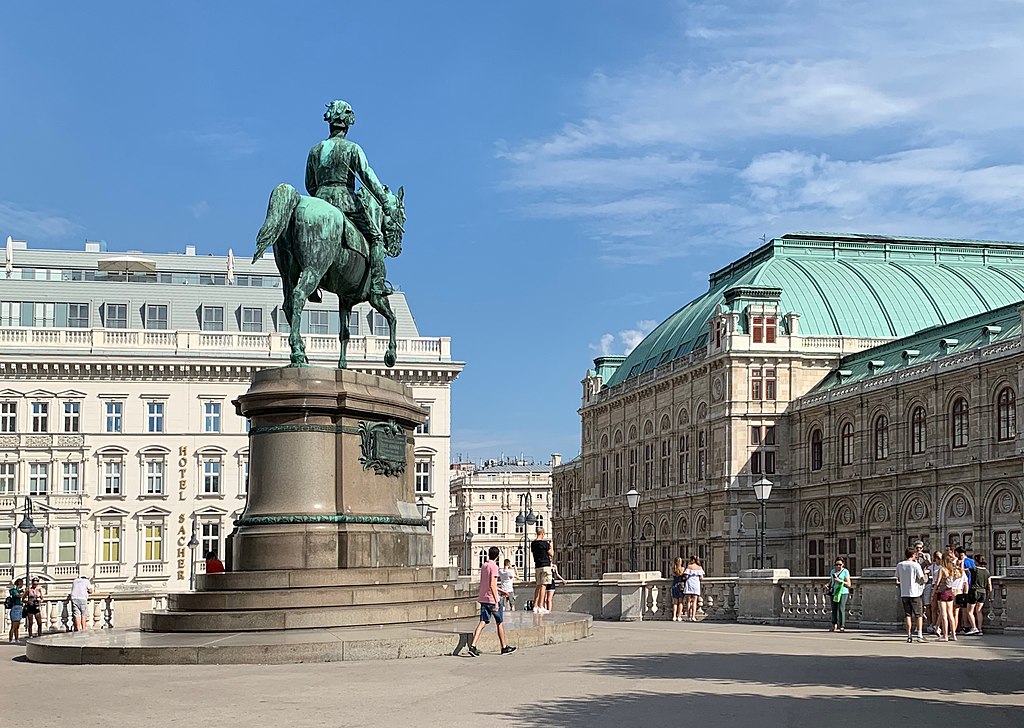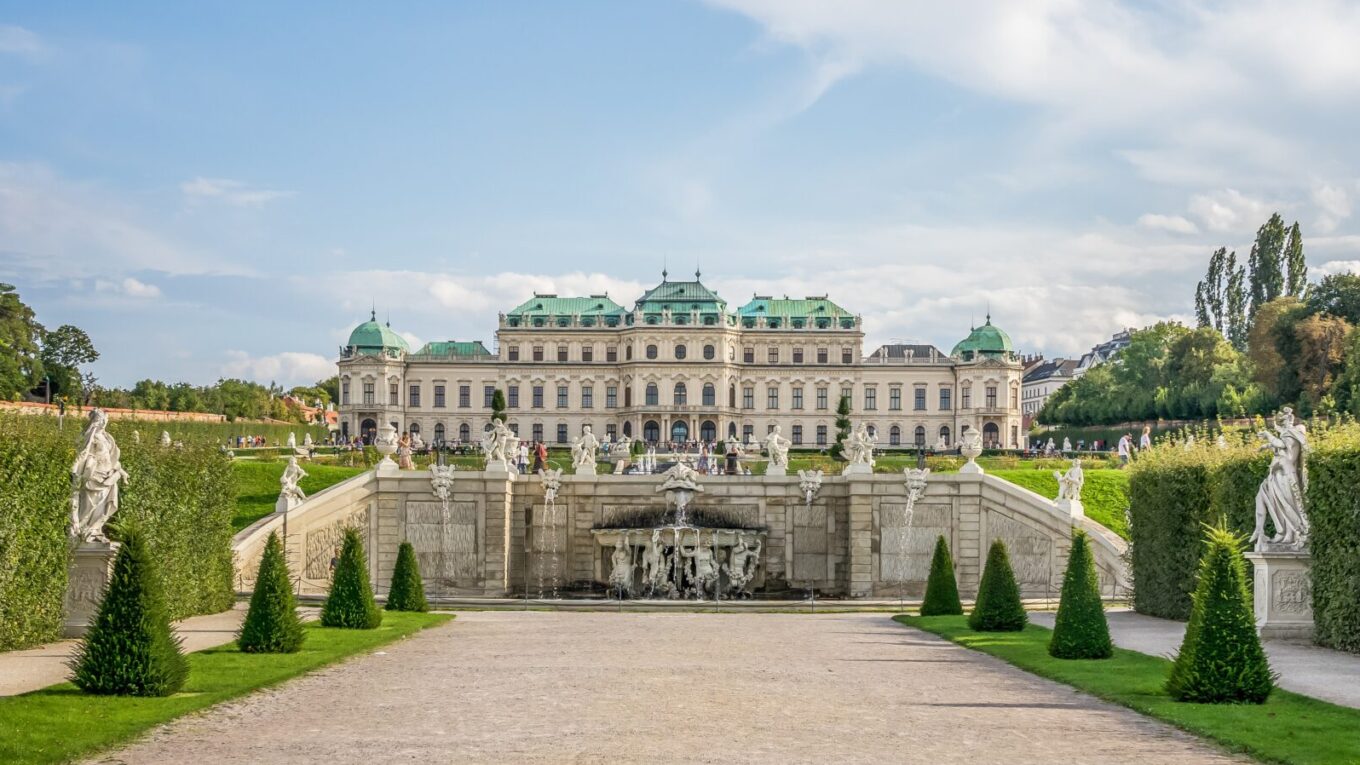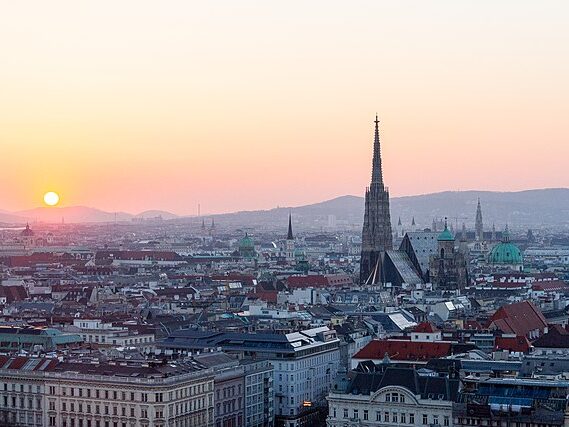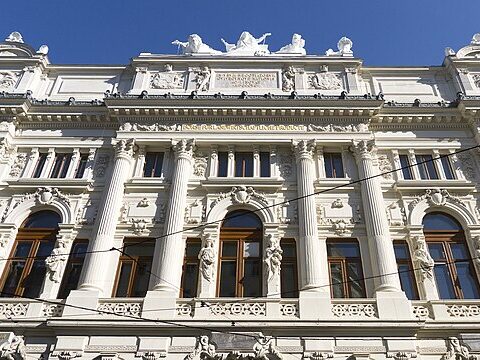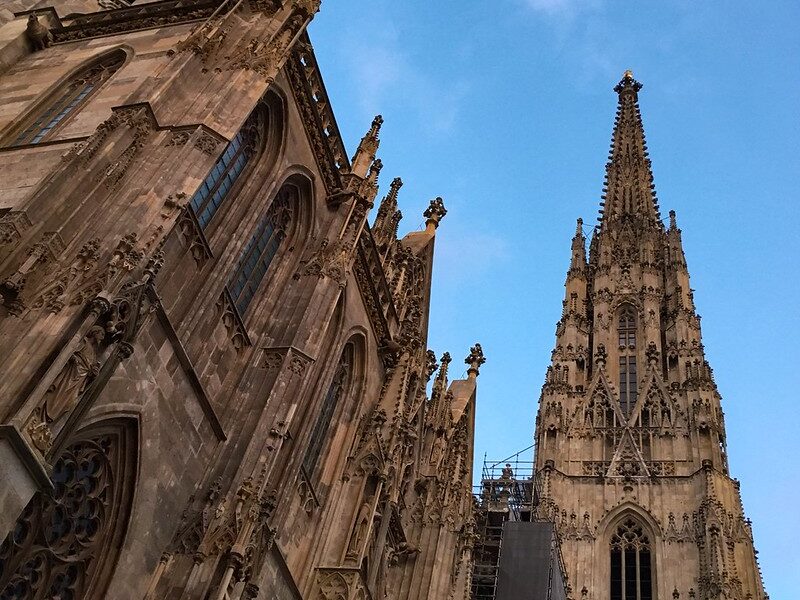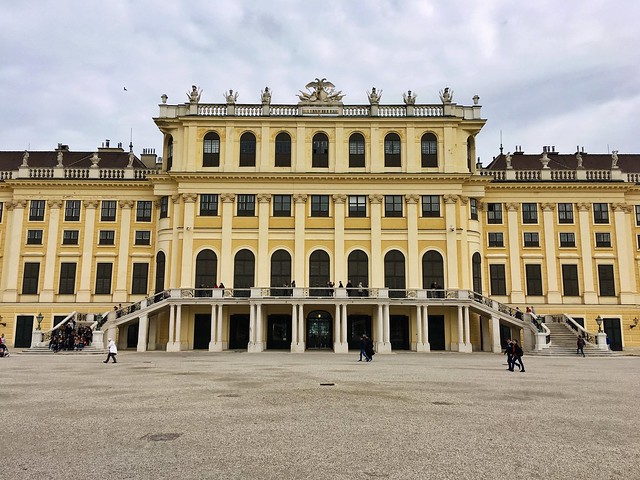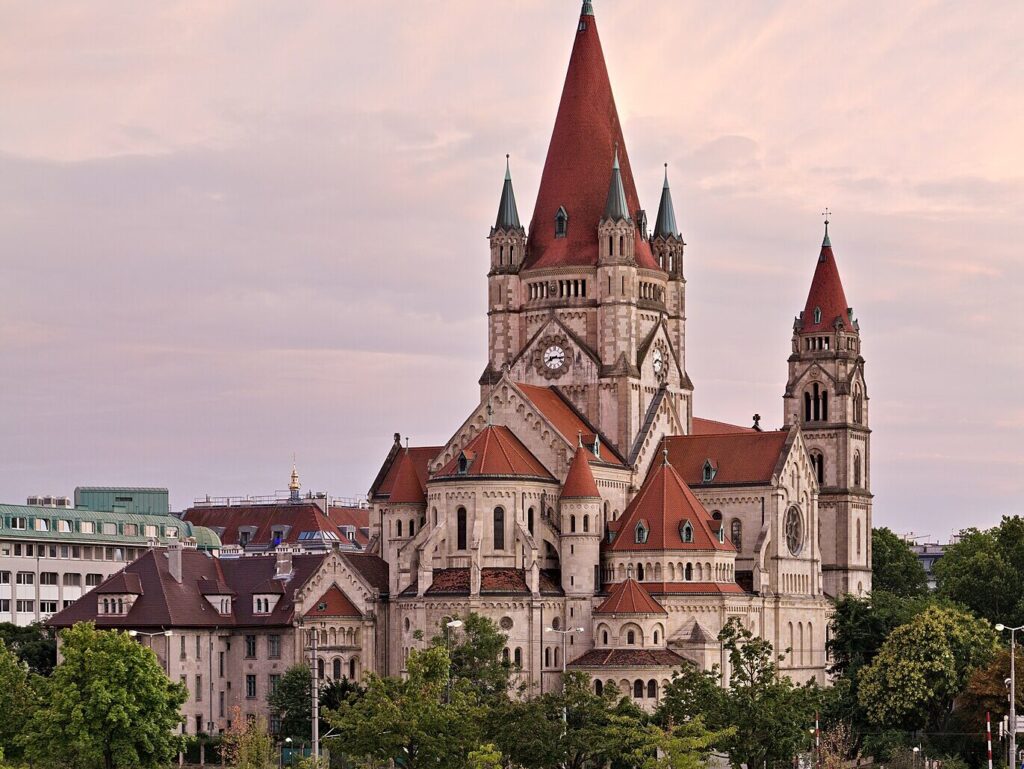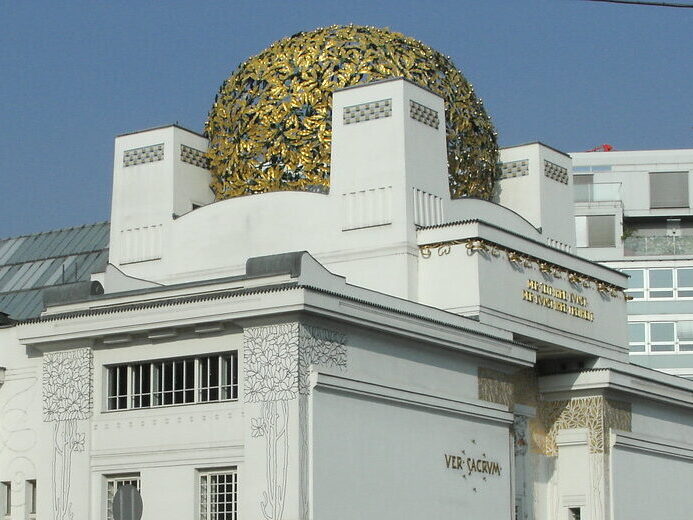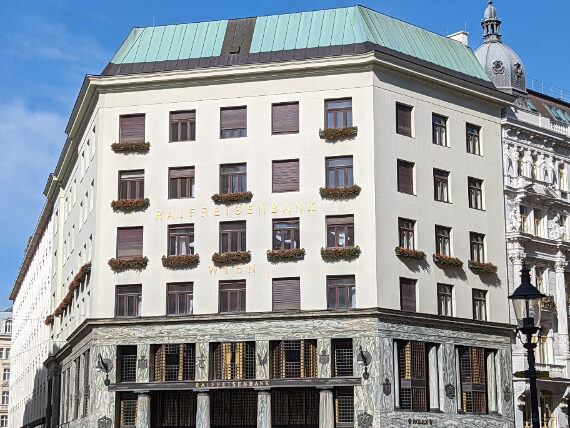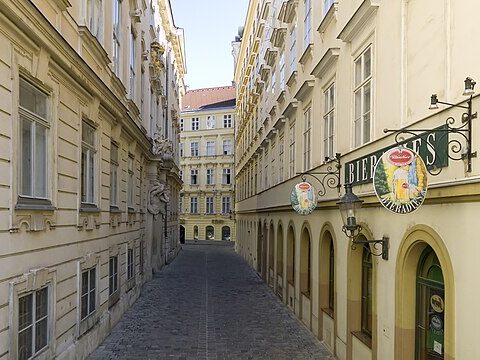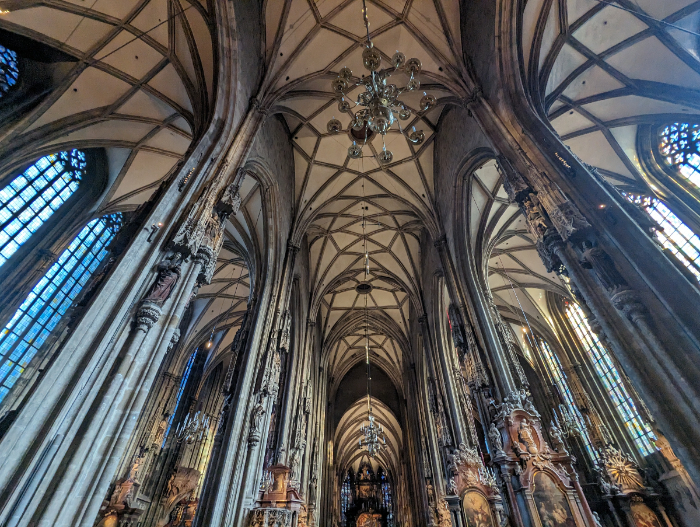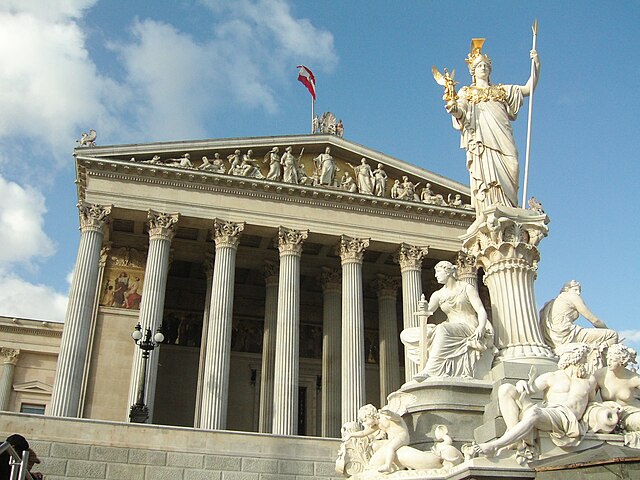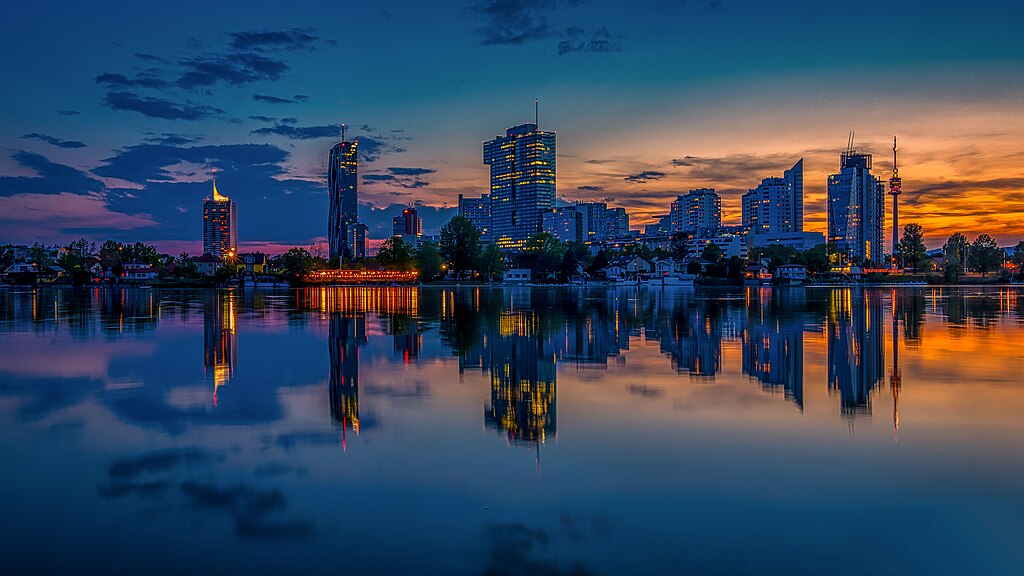Architecture of Vienna, Austria
Vienna is the modern-day capital of Austria and home to over 2 million people. The city is known for its grand boulevards, lavish palaces, and sophisticated culture. Vienna was once the center of the mighty Austrian Empire and home to the Habsburg Monarchs. The Habsburgs would completely transform the city, filling Vienna with countless Baroque Monuments. Vienna is also well known for the Ringstrasse – a circular network of city blocks enclosing its historic core. The Ringstrasse contains many significant buildings, mostly designed in the Neoclassical and Revivalist styles. The article below will highlight all of the greatest works of architecture in Vienna, and show how the city has changed over the centuries.
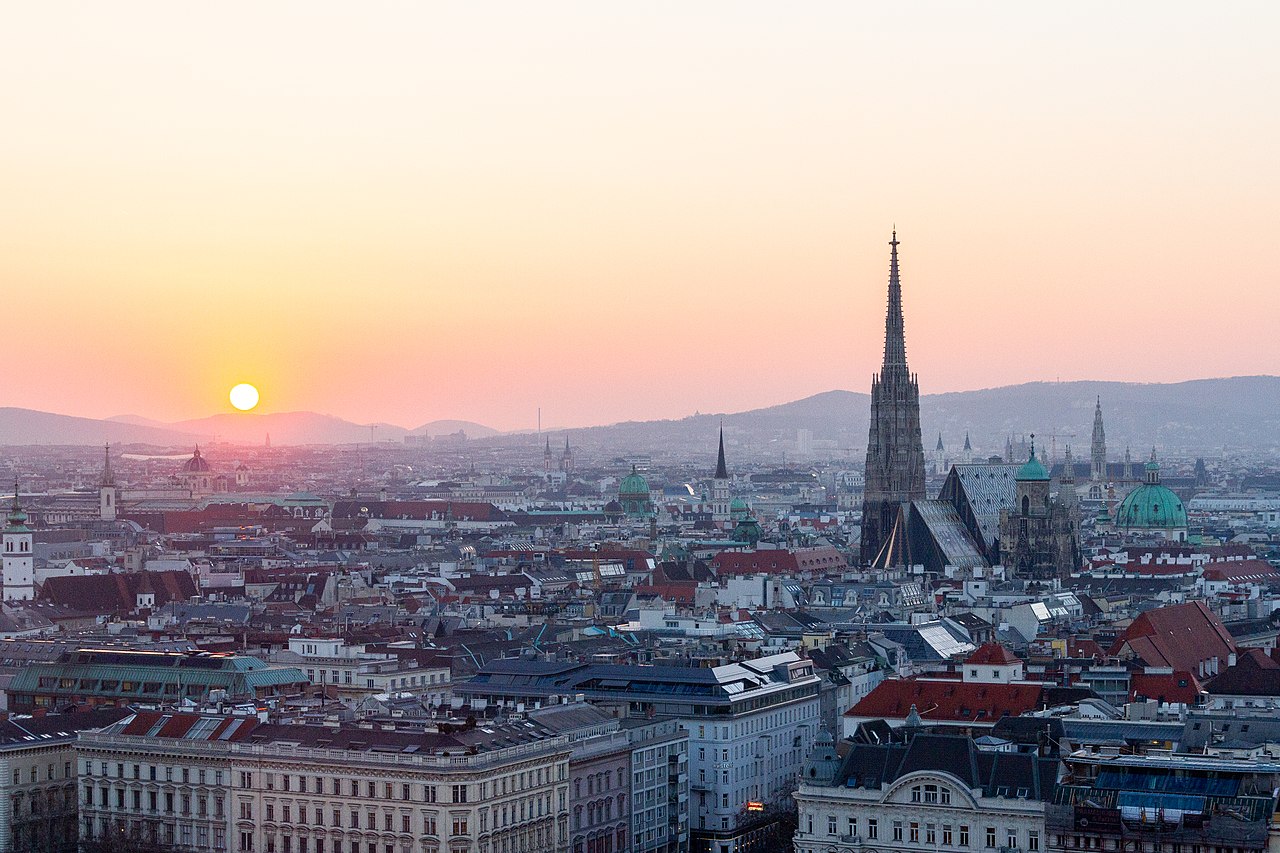
Map of Vienna
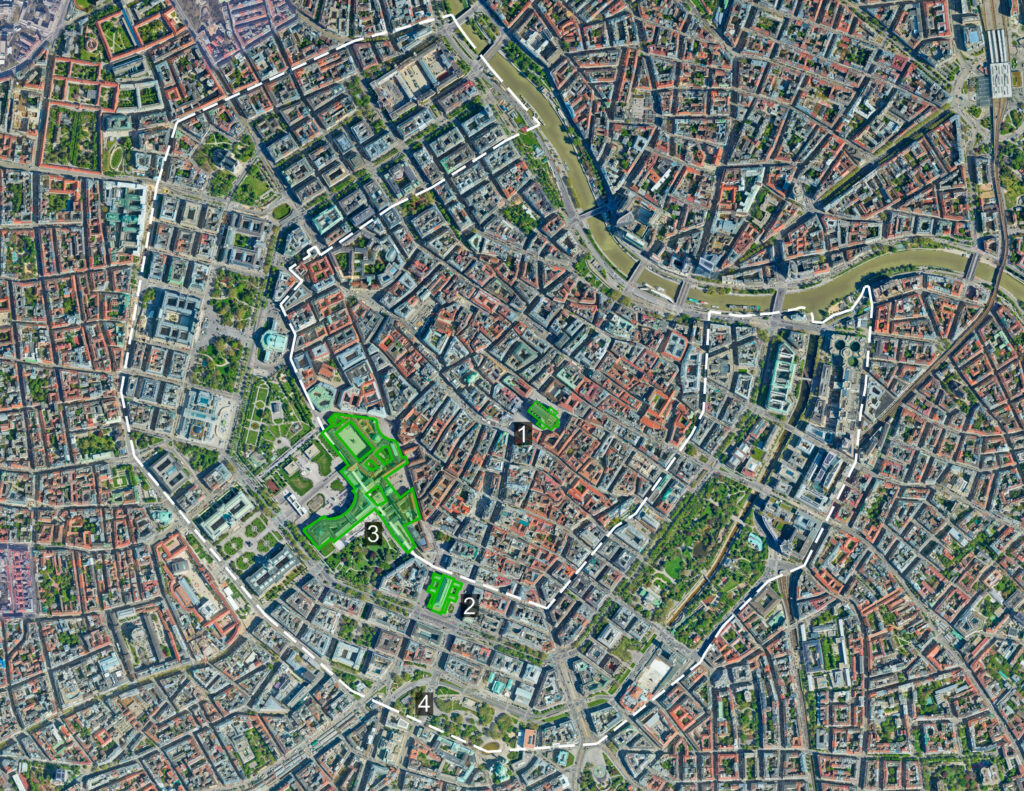
Map of Vienna highlighting some of the city’s main attractions.
1. St. Stephen’s Cathedral
2. The Vienna State Opera House
3. Hofburg Palace
4. The Outline of the Ringstrasse
Table of Contents
Use these buttons to navigate to different sections of the article
History of Vienna
Unifying Elements in Viennese Architecture
The Ringstrasse
Maps Data: Imagery © 2025 Airbus, Landsat / Copernicus, Maxar Technologies, Map Data ©2025 Google
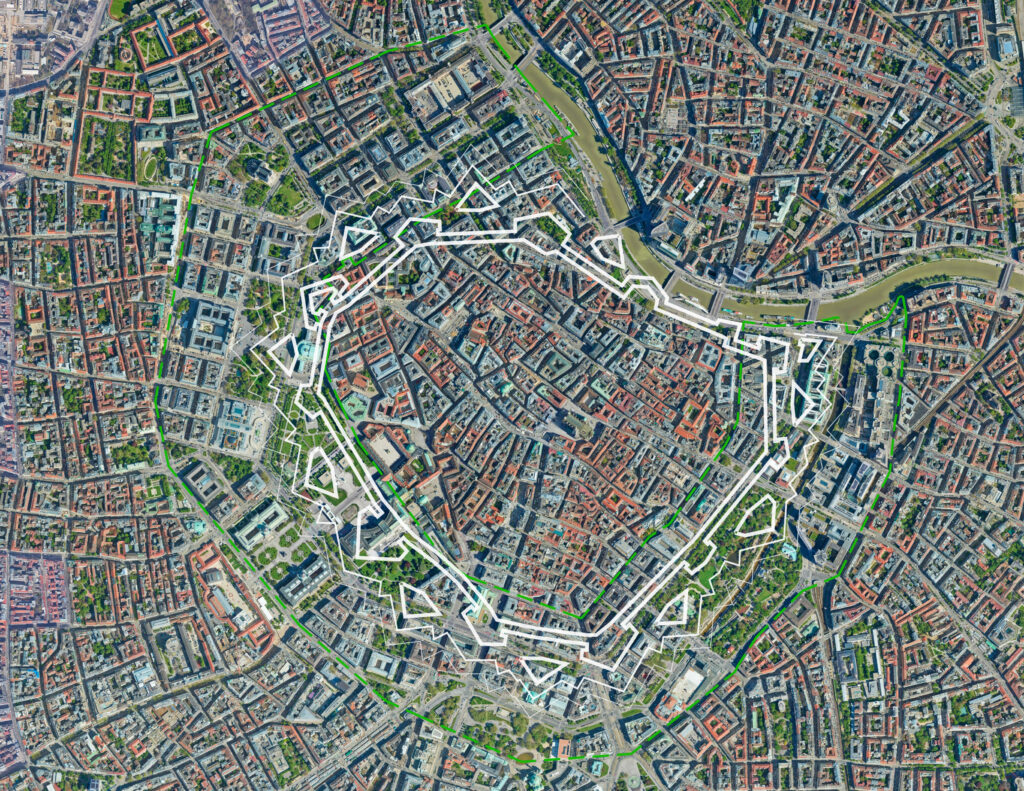
The Ringstrasse is one of the most well-known areas in Vienna. Most of the city’s greatest sites are located within this circular ring of roads, parks, and buildings. The Ringstrasse corresponds with Vienna’s now demolished city walls and is one of the greatest urban renewal projects in European history. Many of Vienna’s metro stations are located along the Ringstrasse and it helps the entire city connect with both the Innere Stadt and the surrounding neighborhoods. The image above shows the fortifications of Vienna with white lines and the perimeter of the Ringstrasse Area with a green dashed line.
White, Pristine Buildings
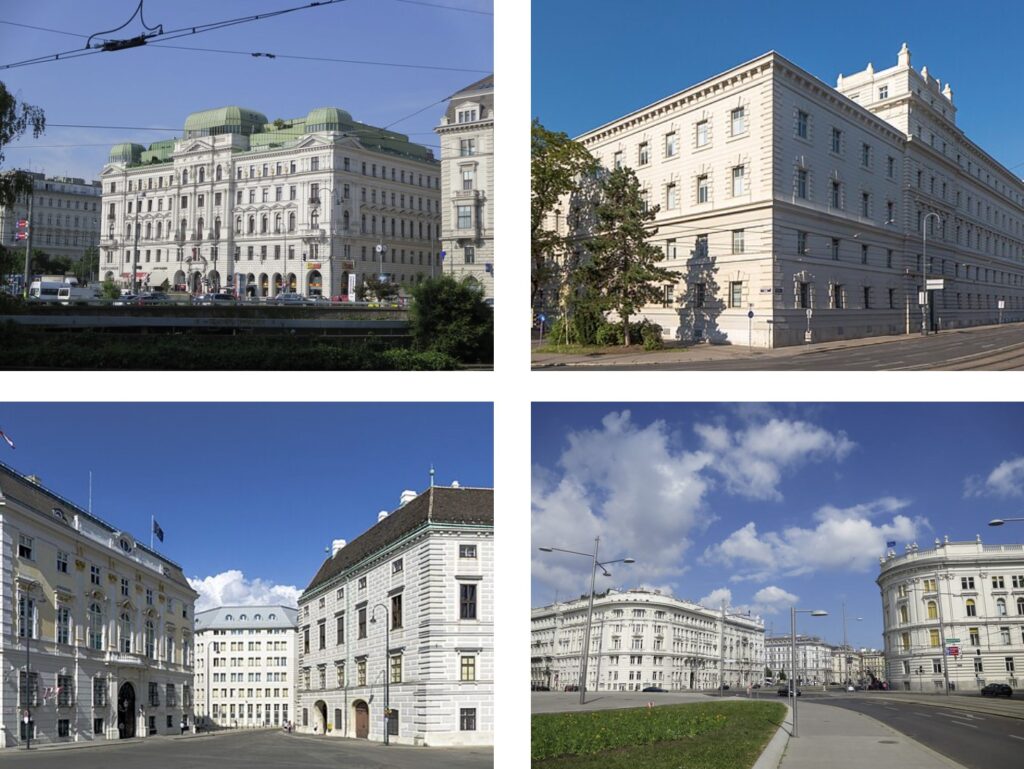
One color seems to dominate the streets of Vienna: White. The city is filled with countless examples of pristine and gleaming white buildings. Many of these structures date from the Baroque Age & the 19th century. All of these white buildings give the city a very clean and cohesive appearance, which is a big part of what makes Vienna so unique.
House of Habsburg
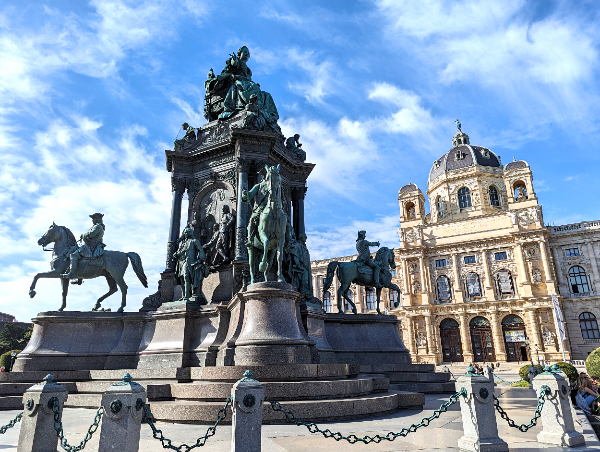
One other element seen all over Vienna is the influence of the Royal House of Habsburg. The Habsburgs constructed several palaces and gardens throughout the city, most notably Hofburg Palace and Schönbrunn Palace. There are also several major streets and squares bearing the names of Habsburg rulers, along with statues of various family members throughout the city. The image above shows a large statue of Empress Maria Theresa, which sits at the center of a square known as Maria-Theresien-Platz.
Gothic Architecture in Vienna
During the Gothic Age, Vienna was a leading city within the Holy Roman Empire. Although just a regional capital, it was an important trading hub thanks to its position on the Danube River. The city was an important stop on the way to other nations like the Kingdom of Hungary and the Byzantine Empire. Vienna began construction on several large churches during the Gothic Age, including St. Stephen’s Cathedral. Many of Vienna’s churches were redone in subsequent centuries, but several still maintain their original Gothic appearance.
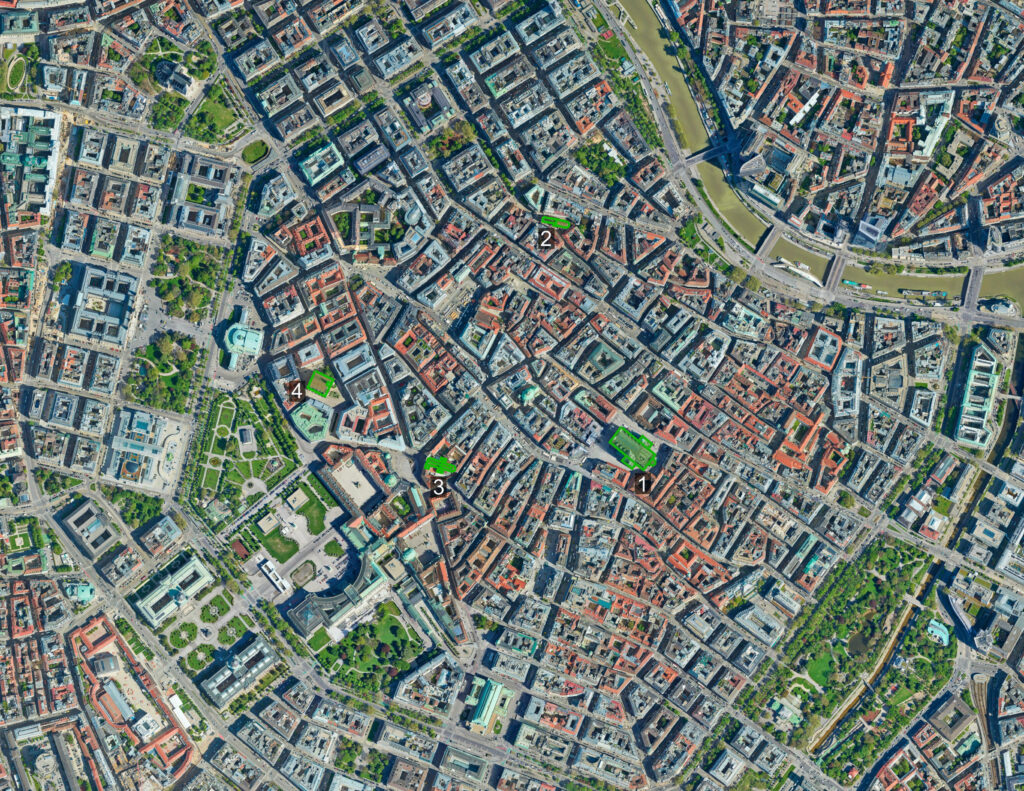
Map of Vienna highlighting several works of Gothic Architecture within the city.
1. St. Stephen’s Cathedral
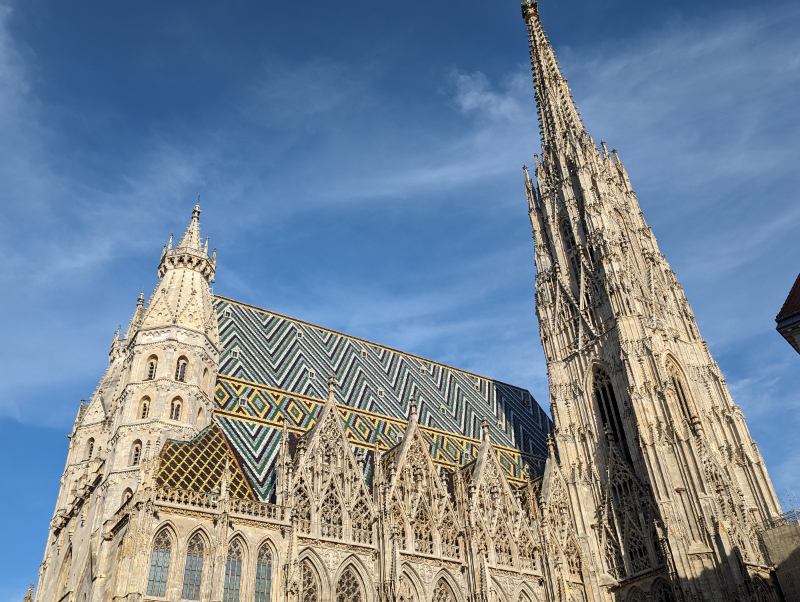
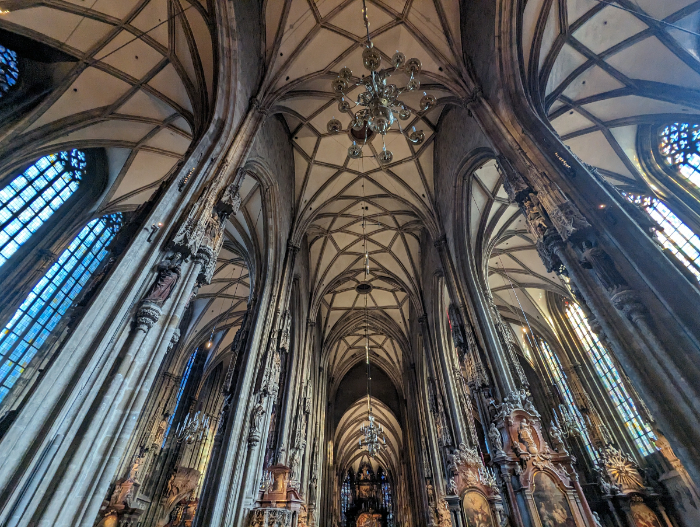
Saint Stephen’s Cathedral is Vienna’s most important church and is a testament to the complex history of the city. Like a lot of cathedrals of the era, the church was built over several centuries with work starting and stopping sporadically. The oldest portion of the building is located around the main entrance and dates from the Romanesque Age. The original plans for the church called for two Gothic spires, however, only the south spire was completed. Today, the unfinished north tower is used as a viewing platform that offers great views of Vienna’s Skyline.
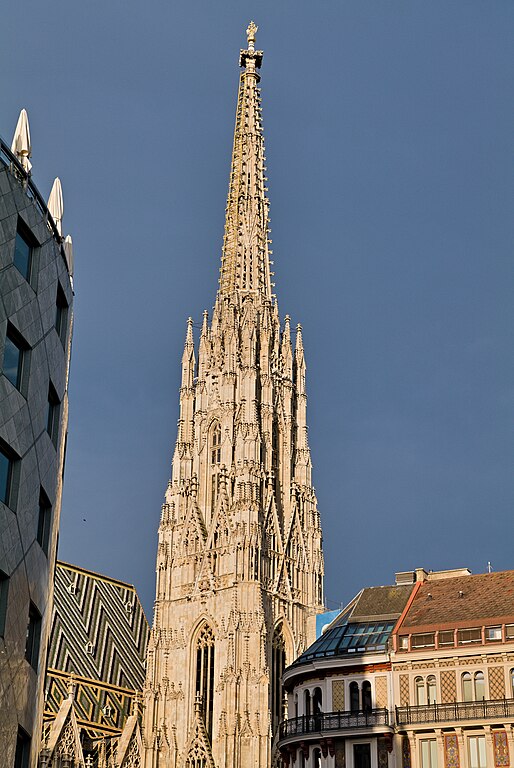
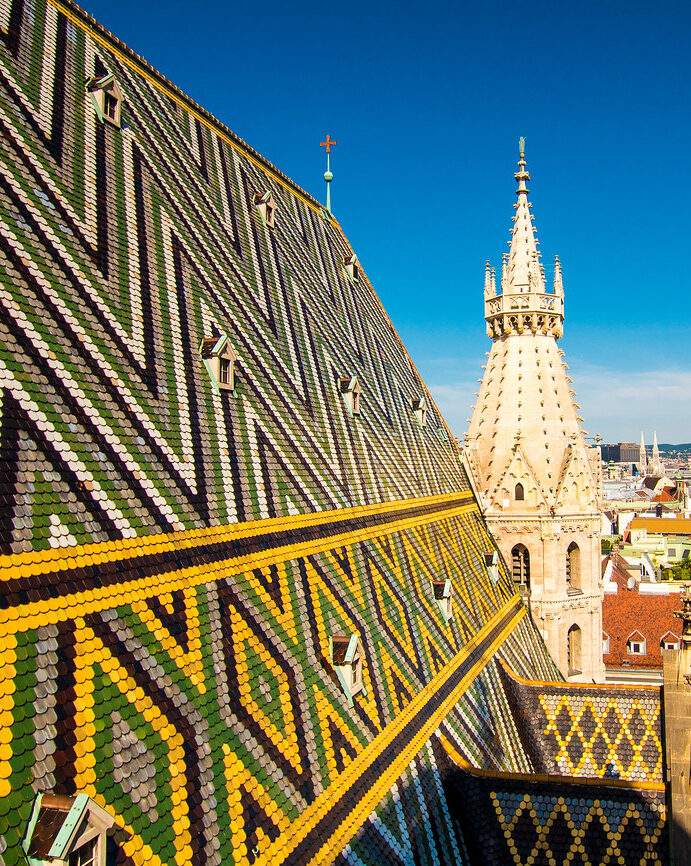
St. Stephen’s Cathedral’s decorative roof tiles have become a symbol of modern Vienna. The roof had to be completely redone after a fire destroyed much of the structure during WWII. Workers used modern techniques like steel reinforcing to support the new roof, which was then covered with 230,000 multi-colored glazed tiles. These tiles showcase important Austrian symbols, such as the two-headed Habsburg Eagle. The square surrounding St. Stephen’s Cathedral is one of the liveliest in Vienna and is home to frequent gatherings and events.
2. Church of Maria am Gestade
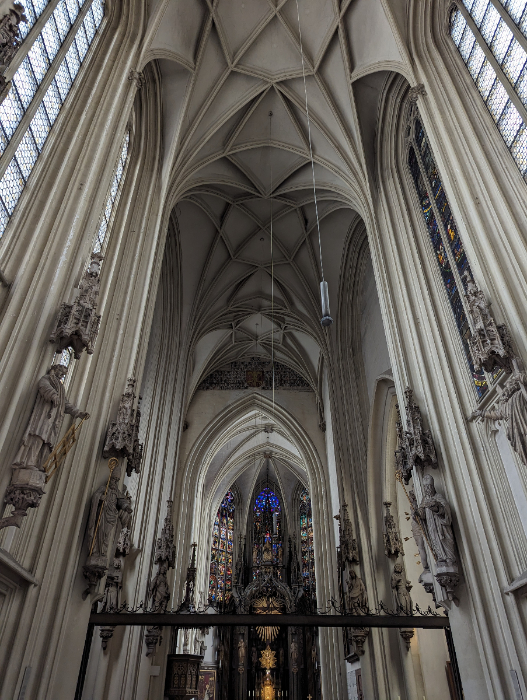
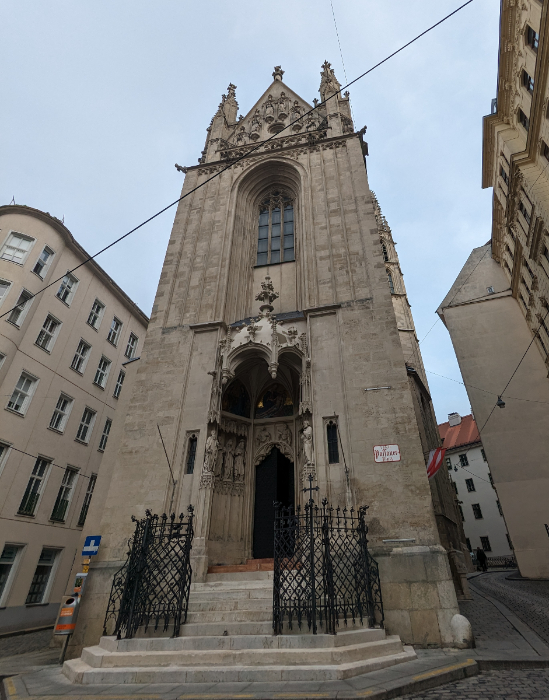
The Church of Saint Maria am Gestade is one of several Gothic churches in Vienna. It’s located on the northwestern side of the Innere Stadt Neighborhood. The church combines all of the typical elements of Gothic Architecture. It has spires, flying buttresses, pointed arches, and stained glass windows. The church’s name loosely translates to, “St. Mary’s on the riverbank” because it was originally located right next to the Danube River. Nowadays though, the waters edge is about 1,000 feet (300 m) from the church.
3. St. Michael’s Church
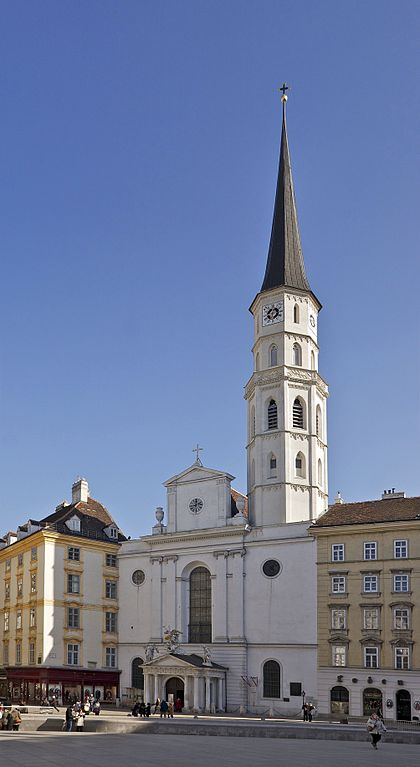
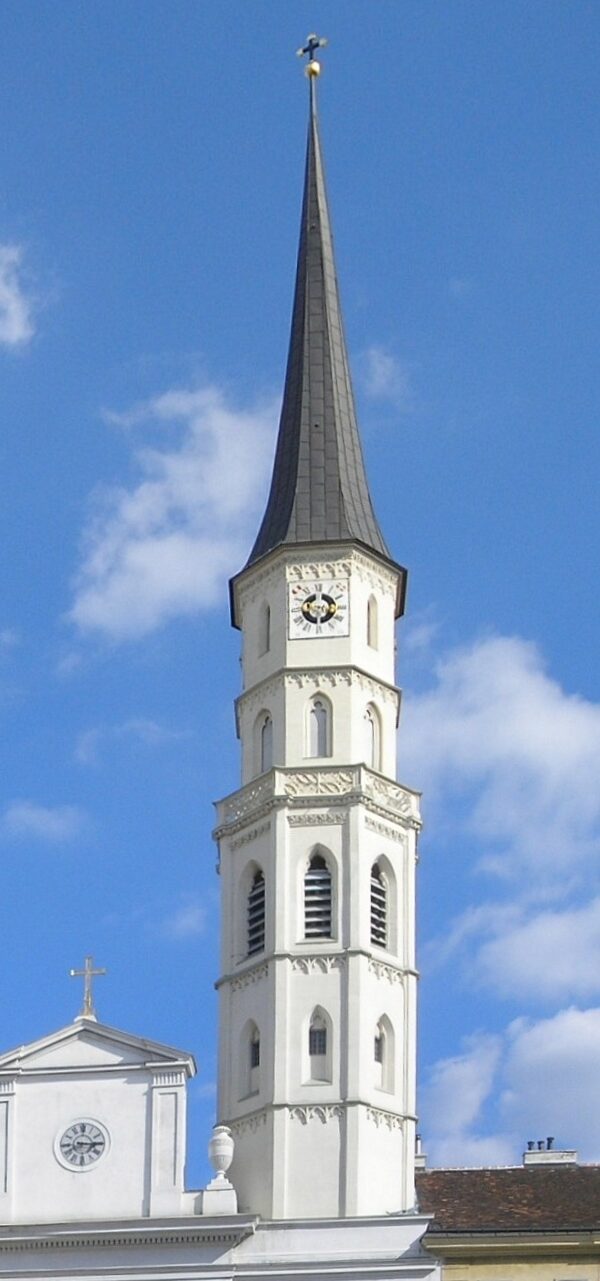
St. Michael’s Church is an early Gothic building located across from Hofburg Palace. Construction began on the church in the early 13th century and it was continuously modified over the years. It contains details from the Romanesque, Gothic, and Baroque Styles. Today the main facade has been renovated, and it matches many of the pristine white buildings found throughout the city. You can still see several original Gothic elements, particularly in the spire and the church’s interior.
4. Minoritenkirche
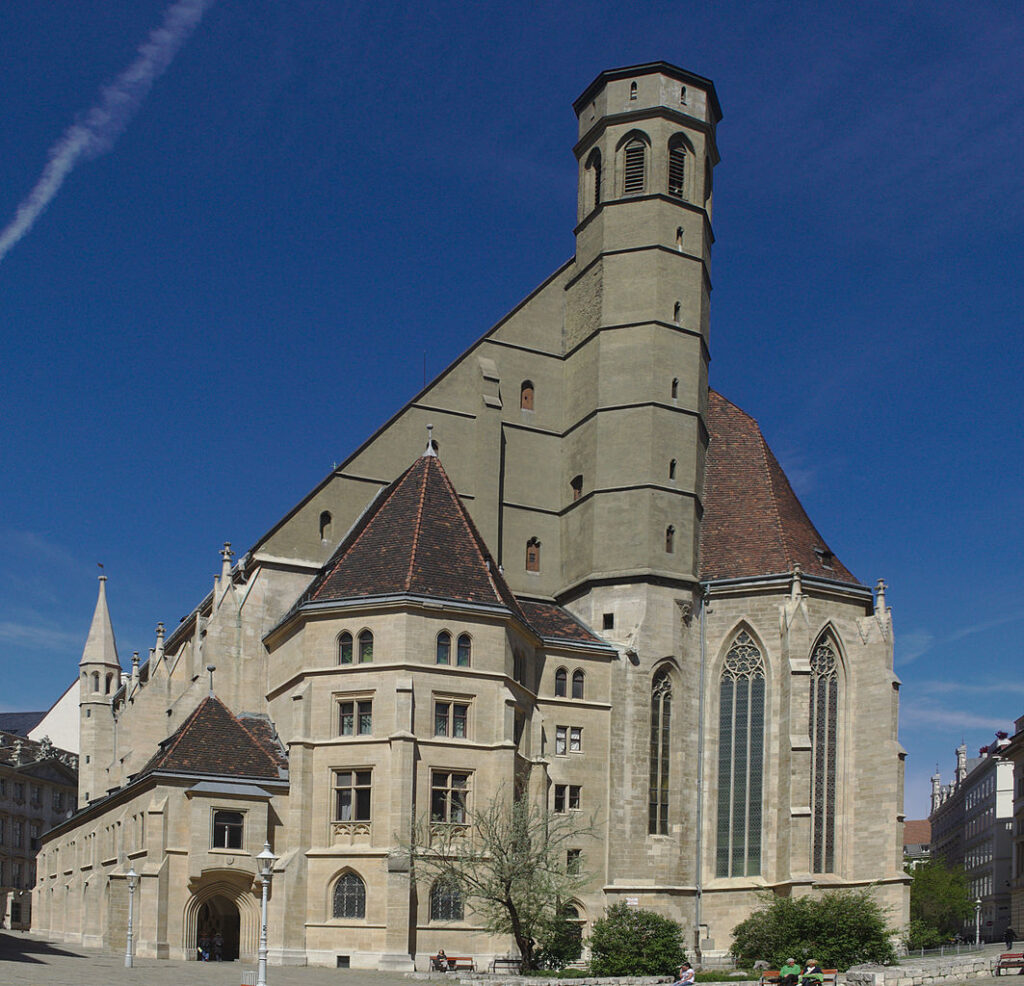
Completed in the mid-1300s, the Minoritenkirche is one of the oldest Gothic Churches in Vienna. It’s located in an open area surrounded by modern buildings, not far from the Hofburg Palace. The image above shows the church’s eastern end. This side was repaired after damages during the Austro-Turkish Wars of the 17th-18th century. Prior to this, the Minoritenkirche had a pointed spire that once contained intricate Gothic detailing The replacement spire is much more simplified.
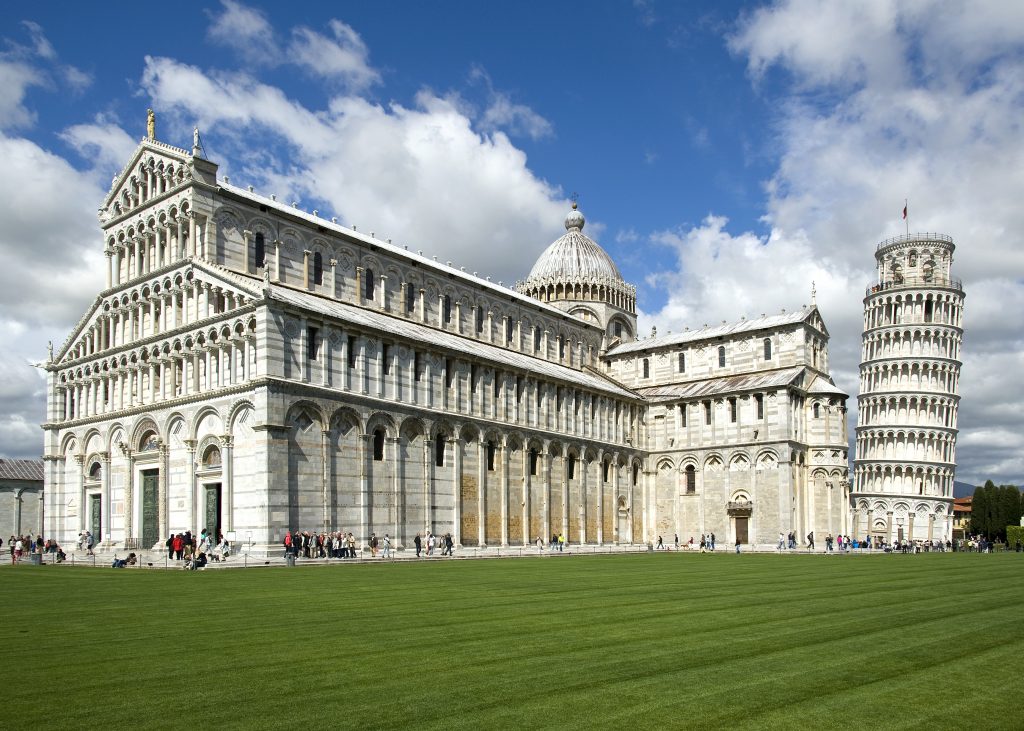
Romanesque was Europe’s dominant architectural style from the 10th-11th century. Read our article, “Romanesque Architecture and the Top 15 Romanesque Buildings” to learn more!
Renaissance & Baroque Architecture in Vienna
During the late Middle Ages, the Habsburgs became one of the most powerful dynasties within the Holy Roman Empire. Several family members were elected emperors, and their political fortunes brought lots of wealth and prestige to Austria. The Habsburgs then financed countless building projects in an effort to fill Vienna with monuments rivaling those of other European capitals.
Vienna was also enclosed by a series of earth-packed walls at this point in time. These walls were vital in protecting the city from attacks by the Ottoman Empire. In 1683 the Ottomans were defeated in a decisive battle that would lead to a period of rapid Austrian expansion. Today many of Vienna’s most impressive buildings date from this era of prosperity which coincided with the Baroque Age in Architecture.
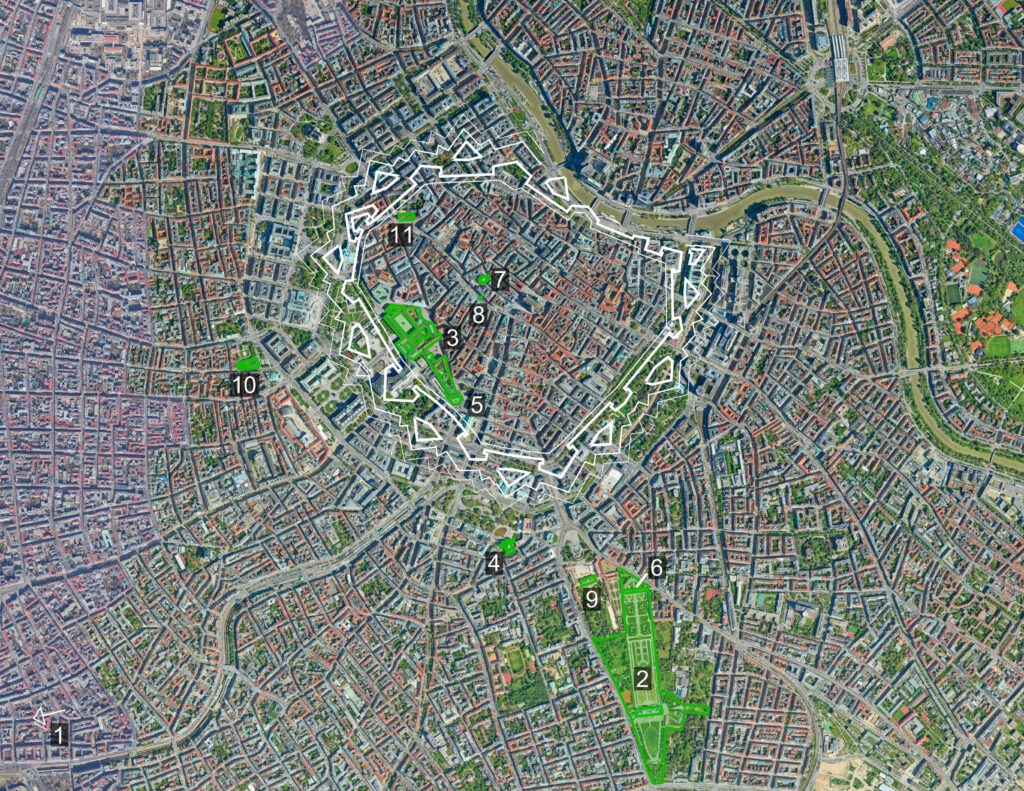
Map of Vienna highlighting several works of Renaissance & Baroque Architecture within the city.
Note: #1 on the list is not depicted.
1. Schönbrunn Palace
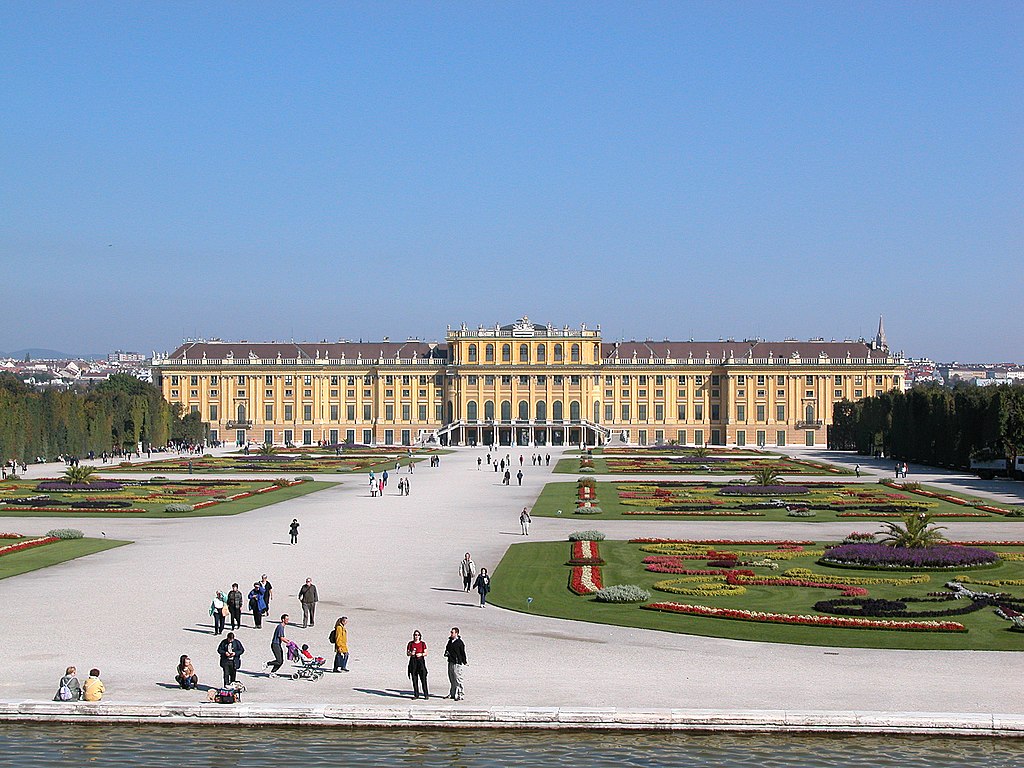
Schönbrunn Palace is one of Europe’s great Royal Residences, rivaling the infamous Chateau de Versailles. It was used as a summer residence for the Royal House of Habsburg and it’s located about 2 1/2 miles (4 km) from central Vienna. The design features all of the typical elements of Baroque architecture, like lavish materials, a sense of grandeur, and a larger-than-life scale. Schönbrunn Palace embodies the wealth of the Habsburgs more than any other building.
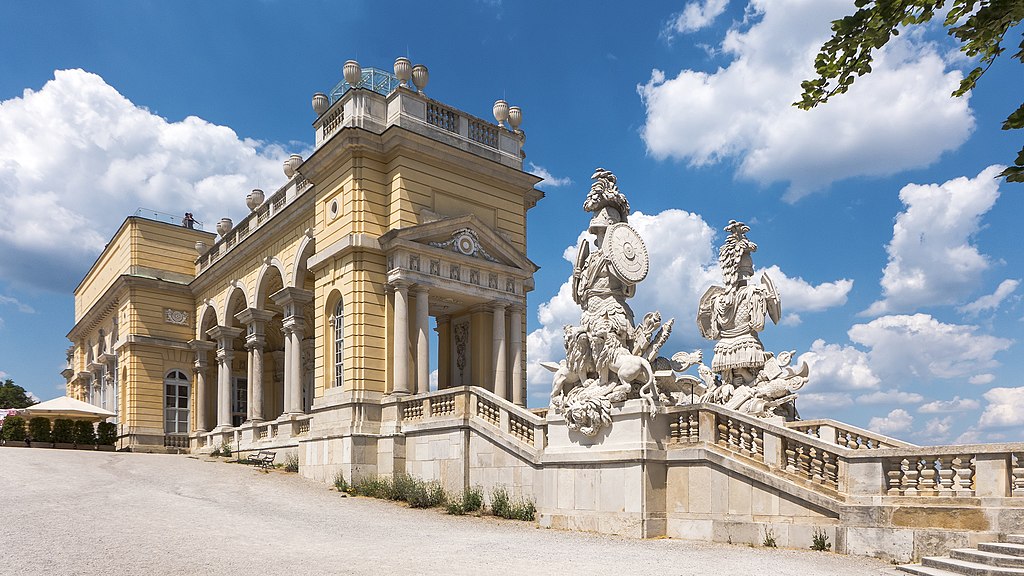
The palace also has a large expanse of precisely manicured gardens dotted with impressive pavilions. The gardens are designed on a long axis that aligns with the rest of the palace. This concept was repeated throughout the Baroque Age, and Schönbrunn’s gardens are some of the most impressive in Europe. Today Schönbrunn Palace is one of the most visited sites in all of Austria, and visitors can expect to spend 3-5 hours exploring the massive palace and its extensive grounds.
2. Belvedere Palace
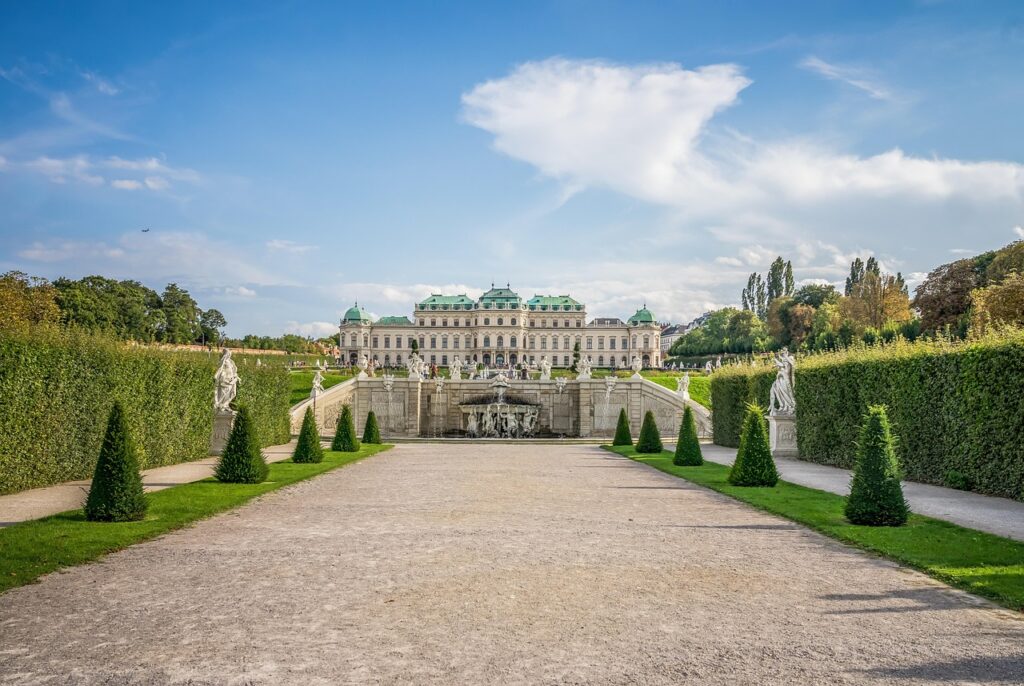
Belvedere Palace is another impressive example of Baroque Architecture in Vienna. The palace was constructed by Prince Eugene of Savoy and was completed in 1723. Prince Eugene was one of the 18th century’s most successful generals & military tacticians. His many victories brought him wealth and fame and he used his money to construct some of Vienna’s grandest buildings. Belvedere Palace contains several key characteristics of Baroque Architecture, including lavish materials, a sense of Grandeur, and the use of Classical Details.
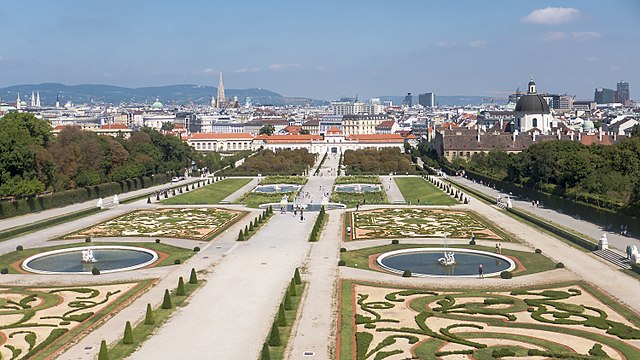
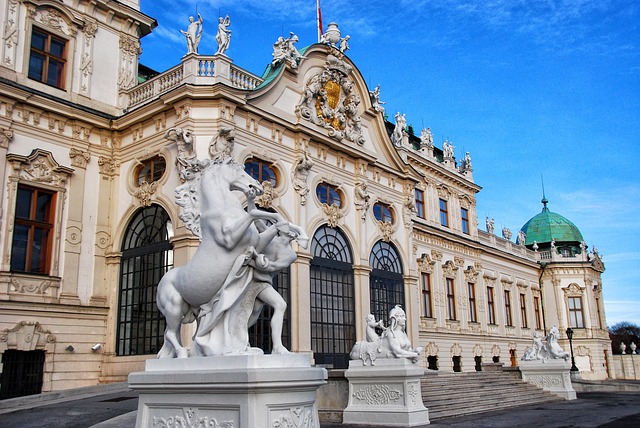
Just like Schönbrunn Palace, Belvedere Palace contains a long axial garden. Today, this garden is a popular hangout spot for both tourists and locals, offering impressive views of Belvedere Palace and the rest of Vienna. The gardens are outfitted with several pavilions, fountains, and reflecting pools which all combine to create a very impressive edifice. Belvedere Palace is located close to Vienna’s main train station, making it an easy place to visit when entering & exiting the city.
3. Hofburg Palace
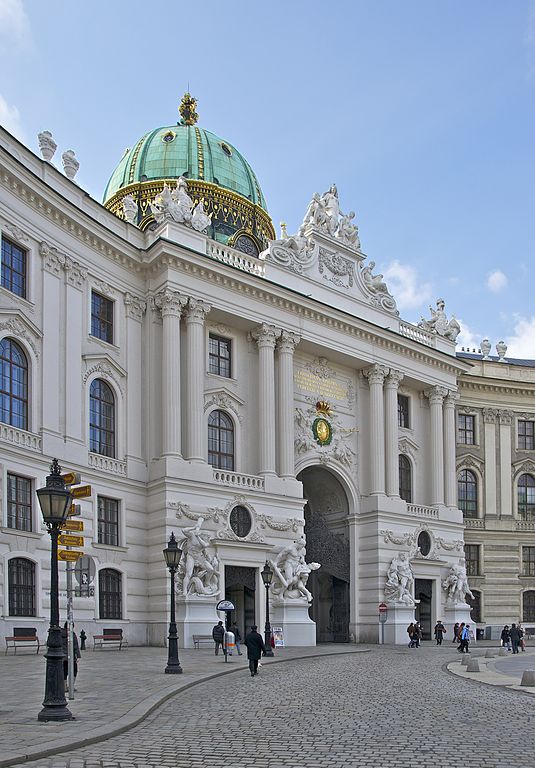
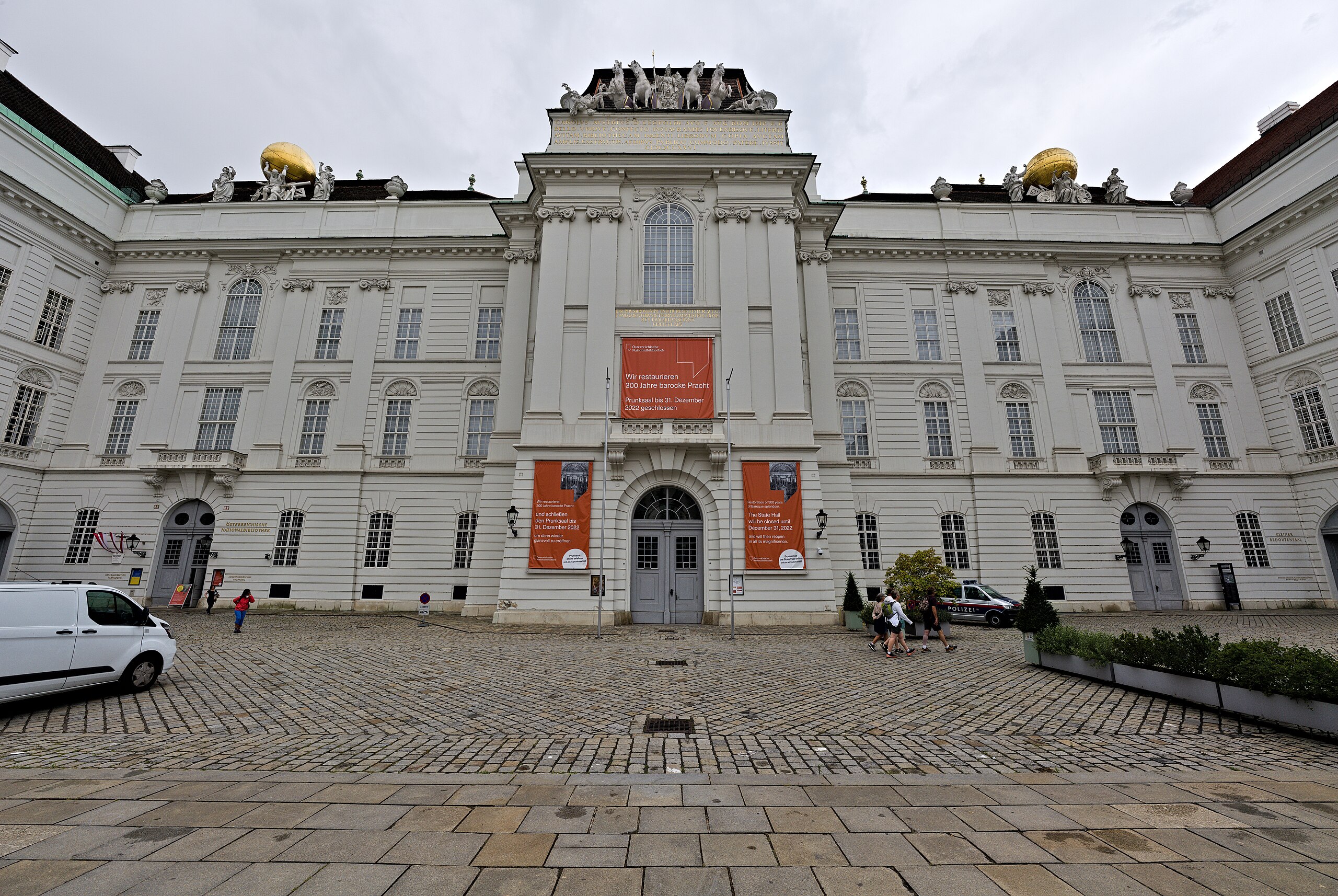
Hofburg Palace is another large royal residence constructed by the House of Habsburg. It was the family’s inner-city home, while Schönbrunn was used as their “Summer House.” Hofburg Palace is very interesting since it was continuously modified over several centuries. It contains a chapel from the Gothic Age, as well as additions completed during the Renaissance & Baroque periods. The Hofburg’s most notable facade was constructed during the Baroque period and it faces St. Michael’s Church and the Michaelerplatz.
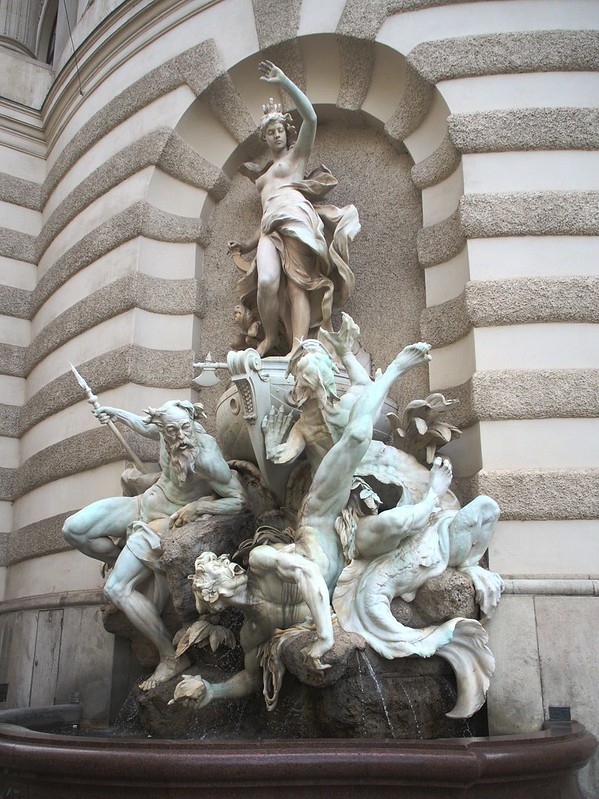
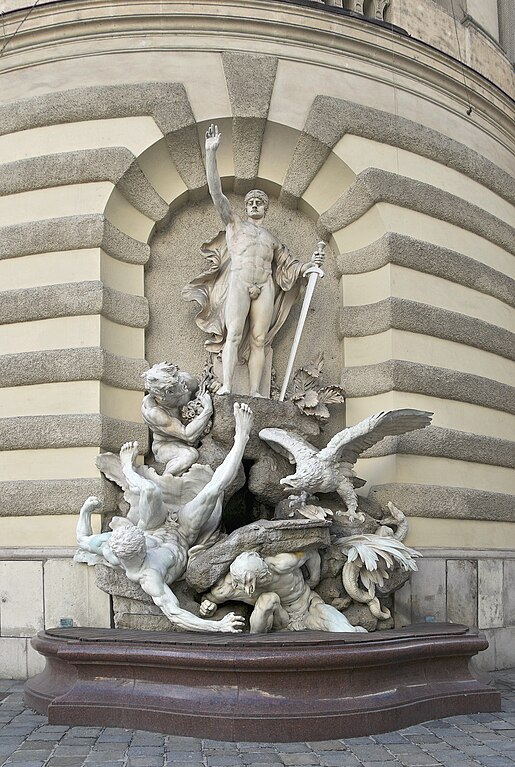
The images above show some of the Baroque sculptures that decorate Hofburg Palace. All of these statues embody the key ideas within Baroque Design. They contain a strong sense of movement and emotion, and they are meant to inspire the viewer with their detail and complexity. Hofburg Palace is one of Vienna’s most popular attractions. The building’s interior galleries are filled with artworks and artifacts once owned by the Habsburgs.
4. Karlskirche
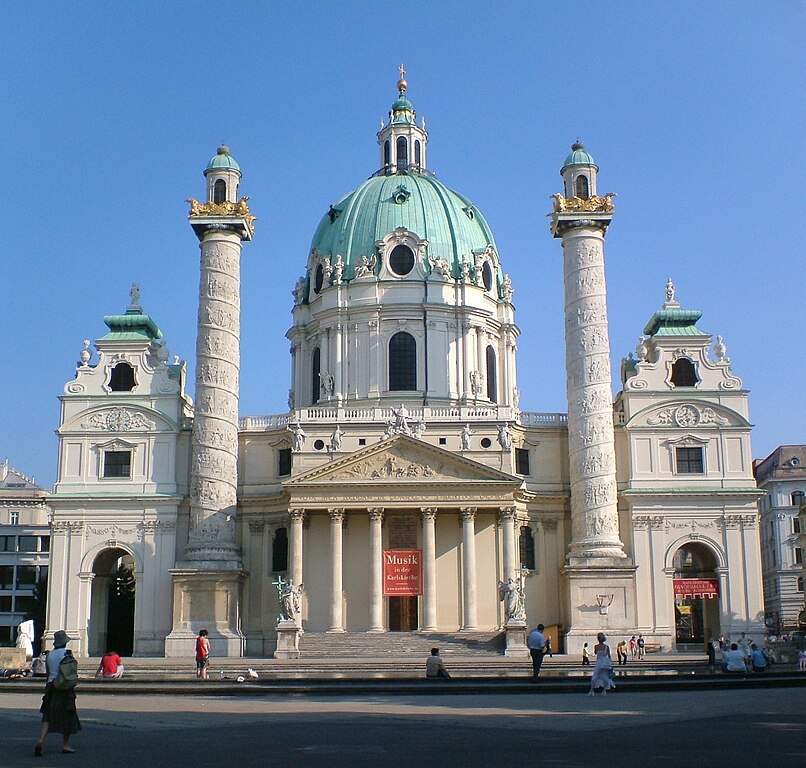
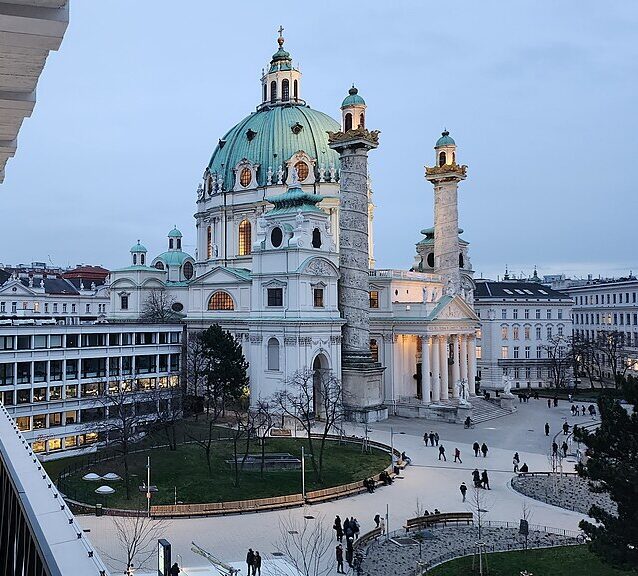
The Karlskirche is a Baroque Church that was completed in 1737. It is famous for its main facade which contains two massive columns resembling Ancient Roman Victory Columns. This idea of replicating imagery from ancient architecture was an important part of both Renaissance and Baroque design. The Karlskirche also contains other important elements from the Baroque Style, including a large elliptical dome which is decorated by a Baroque fresco.
5. Albertina
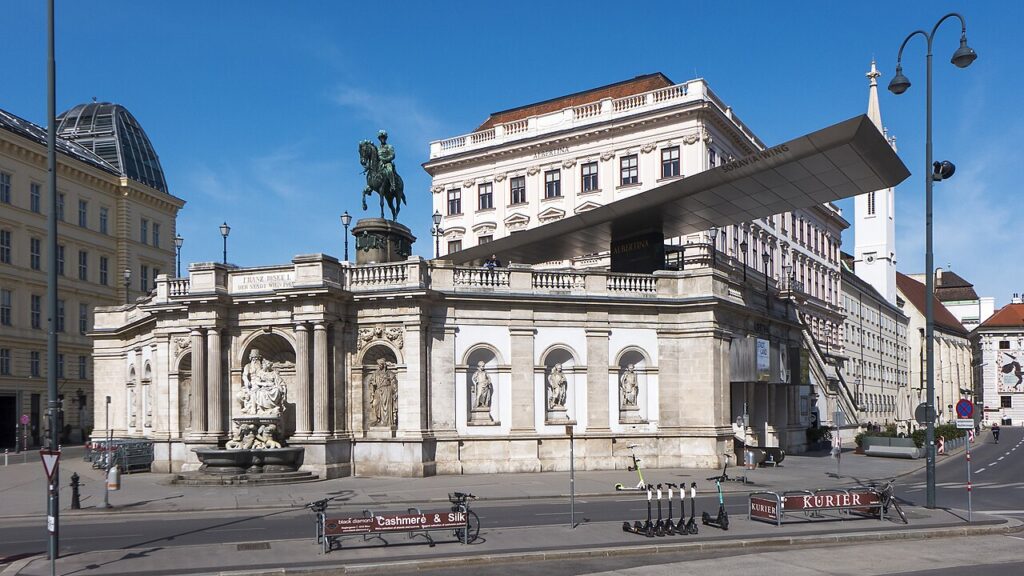
The Albertina is a museum in central Vienna. It is housed inside a former palace that was constructed in phases during the 17th & 18th centuries. It contains elements from both Renaissance and Baroque Architecture. The palace’s owners were wealthy dukes, and their impressive art collection now fills most of the Albertina Galleries. The terrace shown in the image above is open to the public, and it offers great views of the nearby Vienna State Opera House.
6. Lower Belvedere
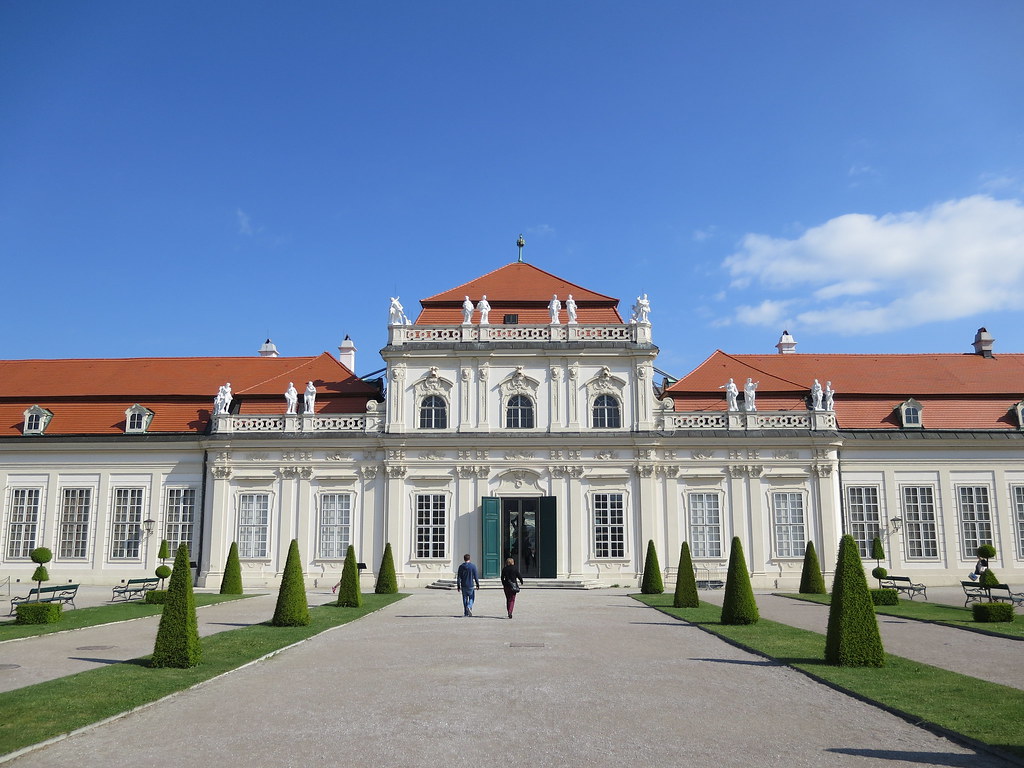
The Lower Belvedere is a work of Baroque Architecture located on the same plot of land as Belvedere Palace. It was constructed before the main Belvedere building, and designed by the same architect. The entire Belvedere Complex was financed by Prince Eugene of Savoy, a highly successful general who fought for the Habsburgs. His victories brought him enough money to build multiple palaces & gardens in Vienna and other cities throughout modern-day Austria and Hungary.
7. Peterskirche
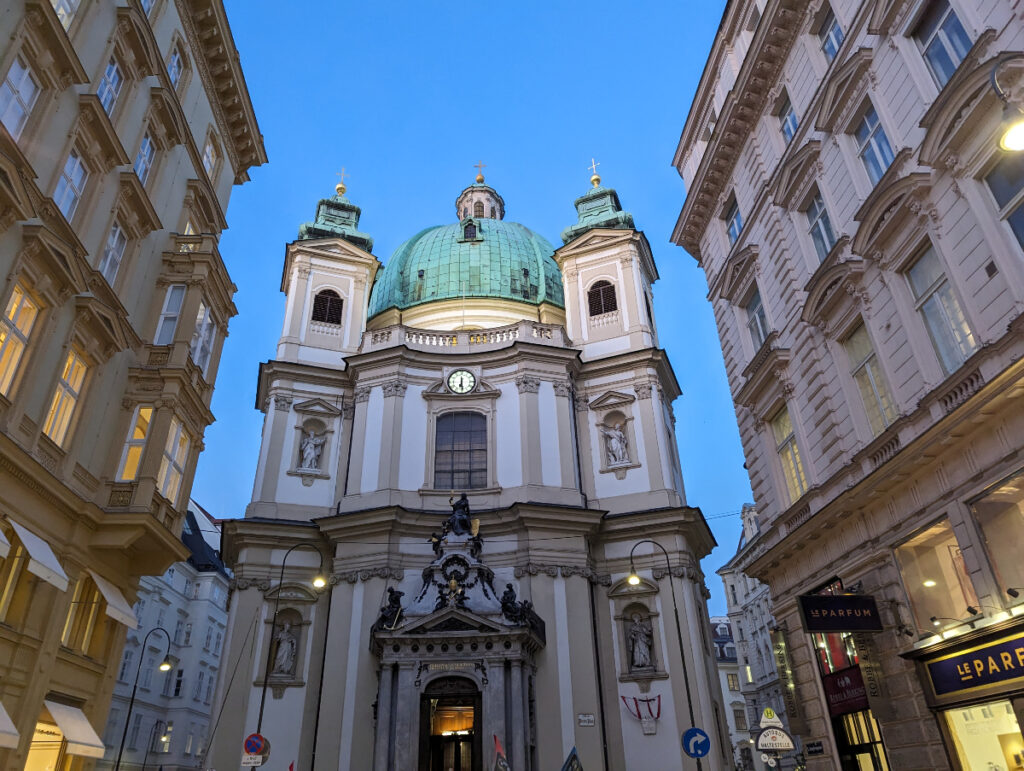
The Peterskirche is another impressive example of Baroque Architecture in Vienna. It was constructed during the early 1700s, and it sits atop the foundation of a much older church dating from the Romanesque Period. Although smaller than many of Vienna’s other churches, the Peterskirche still contains an impressive blend of various Baroque design features. Its elliptical dome is covered with a massive Baroque fresco, and it overlooks a popular square known as the Graben.
8. Vienna Plague Column
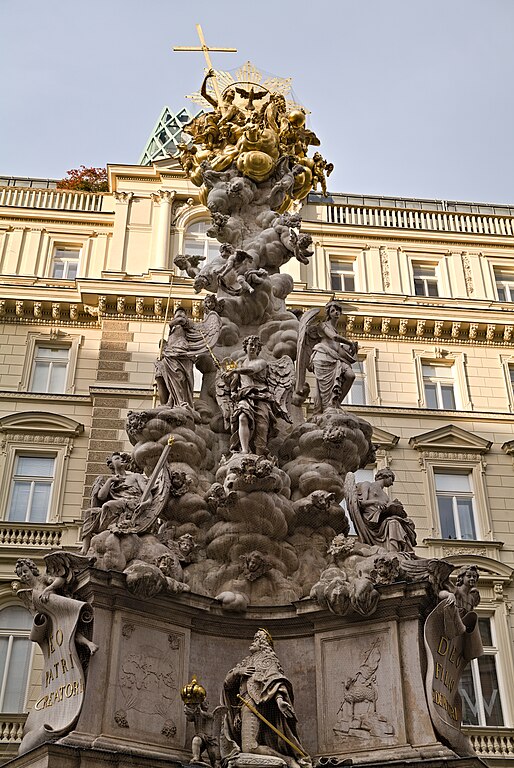
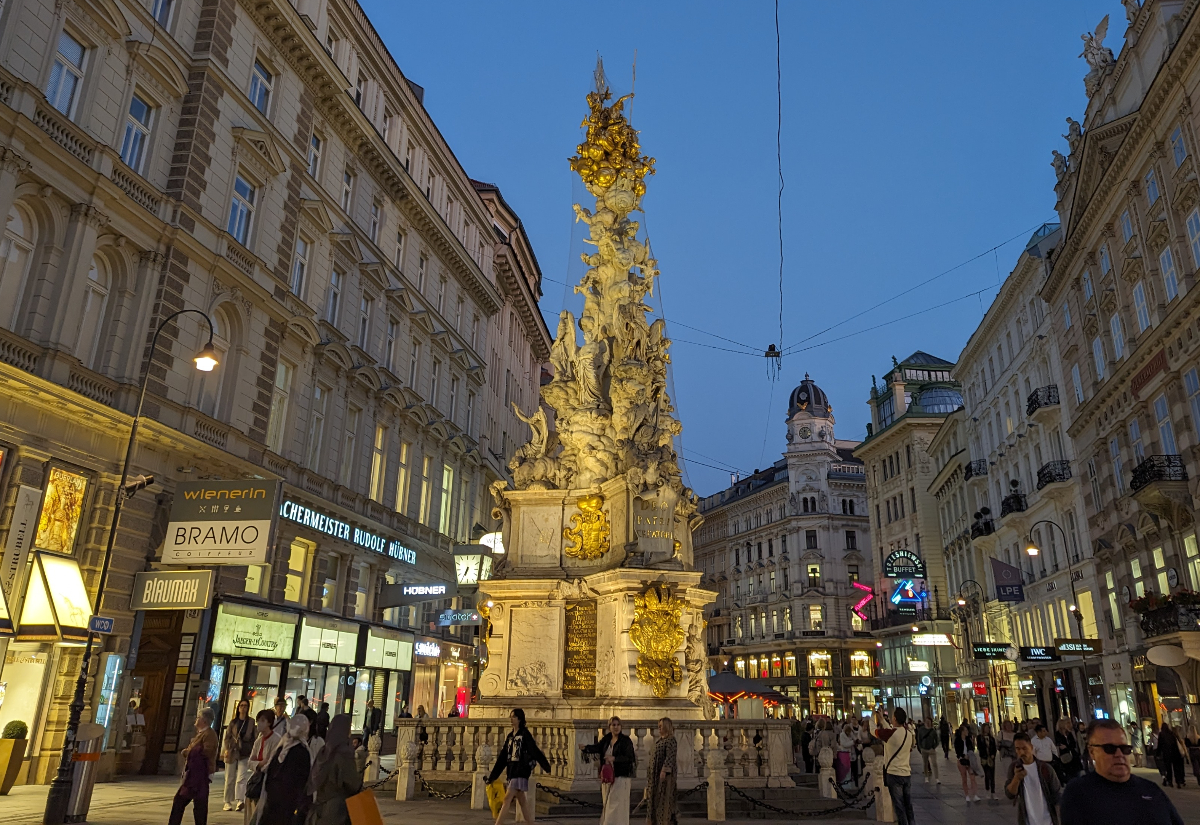
Ever since the early Middle Ages, plagues have devastated many urban populations. So whenever an outbreak was stopped, it was cause for celebration. As a result, several cities throughout Central Europe contain “plague columns.” The Vienna Plague Column was completed in 1694 to commemorate the passing of the Plague of 1679. The column embodies the very spirit of the Baroque Age – it inspires the local population and is intricate, detailed, and full of motion and movement.
9. Palais Schwarzenberg
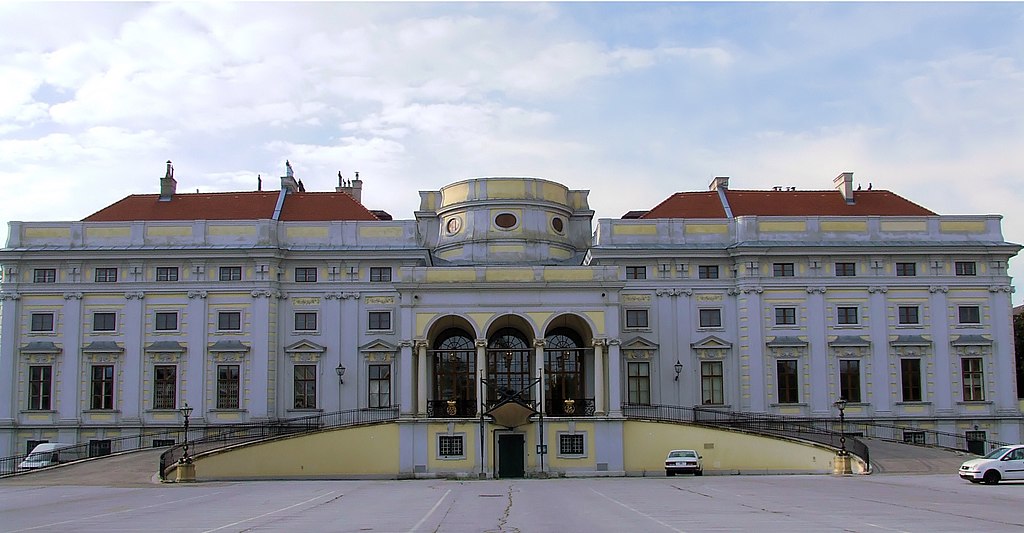
Palais Schwarzenberg is another one of Vienna’s many Baroque Palaces. It is named for the House of Schwarzenberg, a noble family of Czech origin. The Schwarzenbergs produced some of Austria’s most notable generals, including Karl Philipp of Schwarzenberg, who both won and lost many notable battles against Napoleon. Palais Schwarzenberg was designed in the late 1600s by Johann Lukas von Hildebrandt, the same architect who designed the Belvedere Palace. Hildebrandt would go on to be one of the greatest Austrian architects of the Baroque Age.
10. Palais Trautson
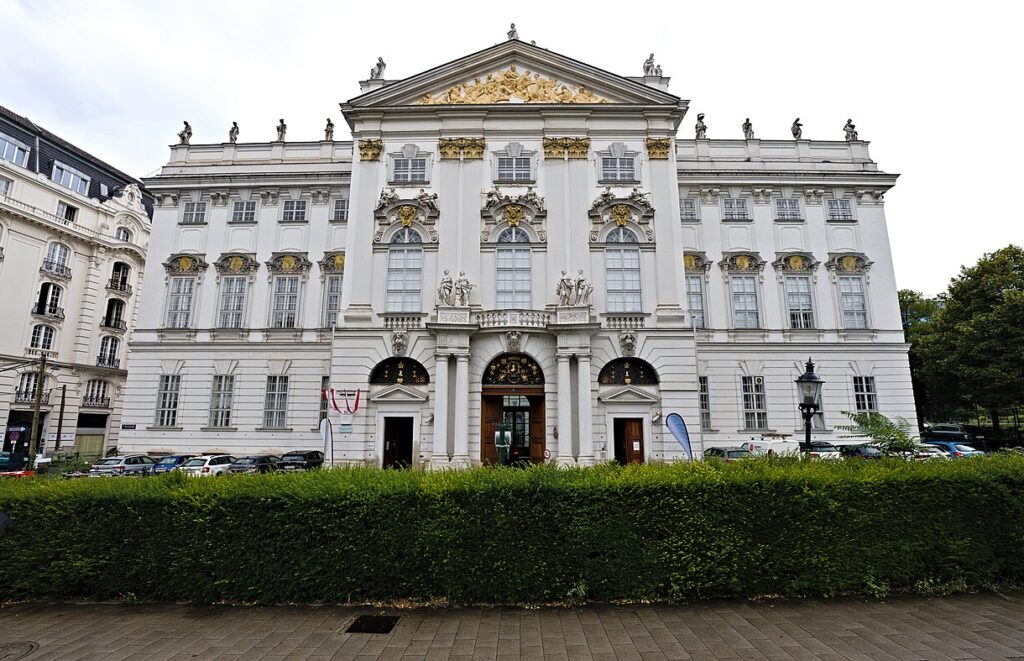
Vienna was home to dozens of noble families during the Baroque Age. Today the city contains several impressive Baroque Palaces, including the Palais Trautson. Palais Trautson was completed in the early 1700s, and it contains many of the flashy details found throughout Baroque Architecture. The main facade has intricate sculptural elements which are covered with gold leaf. The design is meant to show off the wealth of the owners – an idea that repeats throughout much of Vienna.
11. Schottenkirche
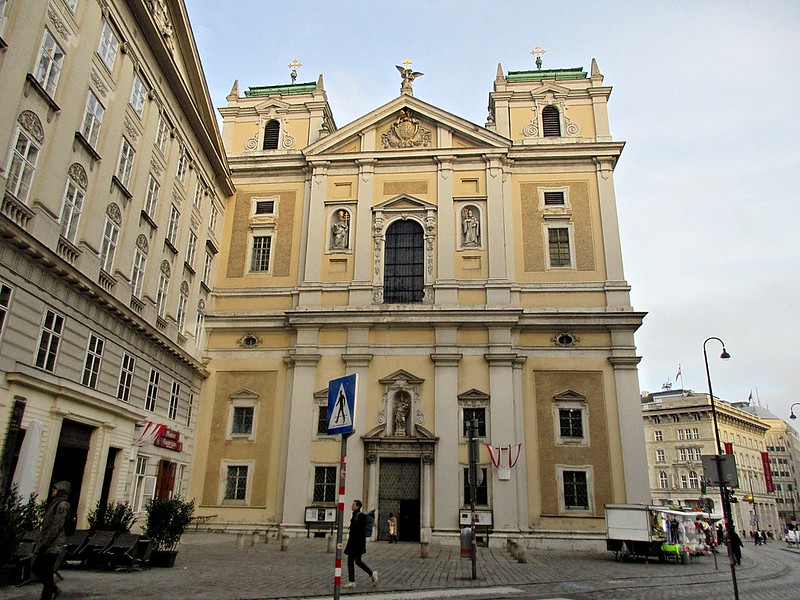
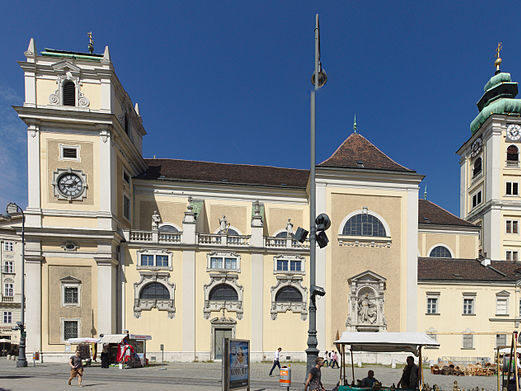
The Schottenkirche is a church located in Vienna’s Innere Stadt neighborhood not far from the edges of the Ringstrasse. It was originally a Gothic building from the 13th century, but it was completely transformed in the 1600s. The Schottenkirche was rebuilt during the Early Baroque Period, and it contains bright colors, intricate details, baroque sculptures, and elements from Classical Architecture. At one point in time, the Schottenkirche was utilized by Vienna’s Irish & Scottish population, and its name loosely translates to “the Scots’ Church.”
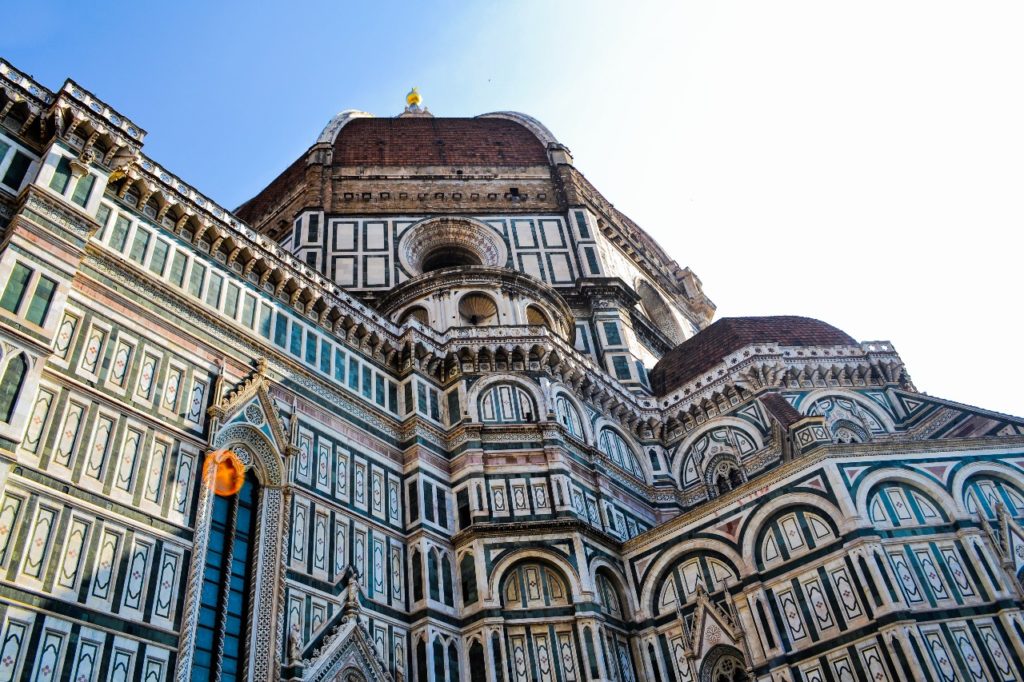
Interested in Renaissance Architecture? Check out our article on the Architecture of Florence to learn more about the Birth of the Renaissance Movement.
Like Architecture of Cities? Sign up for our mailing list to get updates on our latest articles and other information related to Architectural History.
Neoclassical & Revival Architecture in Vienna
During the 19th & early 20th century, Vienna saw a massive transformation. Its ring of fortifications was torn down to help the city expand and make room for more modern structures. The area once taken up by these fortified walls was redeveloped into a series of roads, parks, and large buildings known as the Ringstrasse. The Ringstrasse completely encloses Vienna’s historic center and is home to many of the city’s most iconic buildings. Many of these works of architecture were designed in various Revival Styles, which were popular in the 19th century. Today Vienna is home to a great variety of Neoclassical, Gothic Revival, Renaissance Revival, and Baroque Revival buildings, many of which are located in and around the Ringstrasse.
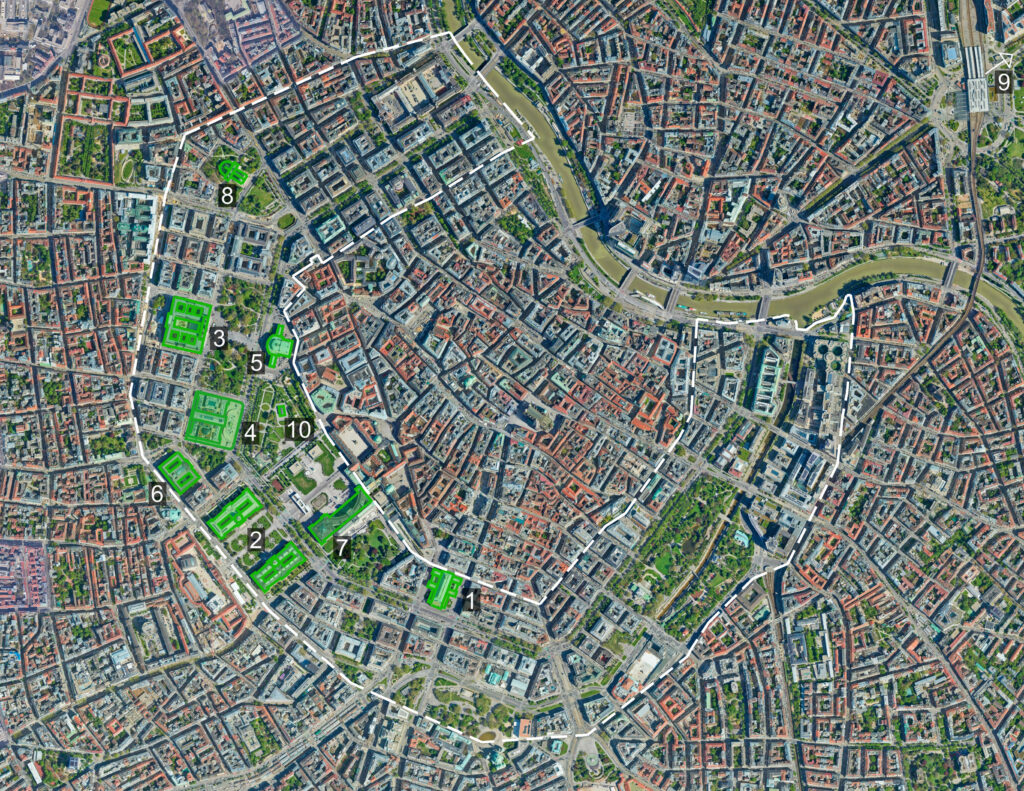
Map of Vienna highlighting several works of Neoclassical & Revival Architecture within the city.
Note: #9 on the list is not depicted.
1. Vienna State Opera House
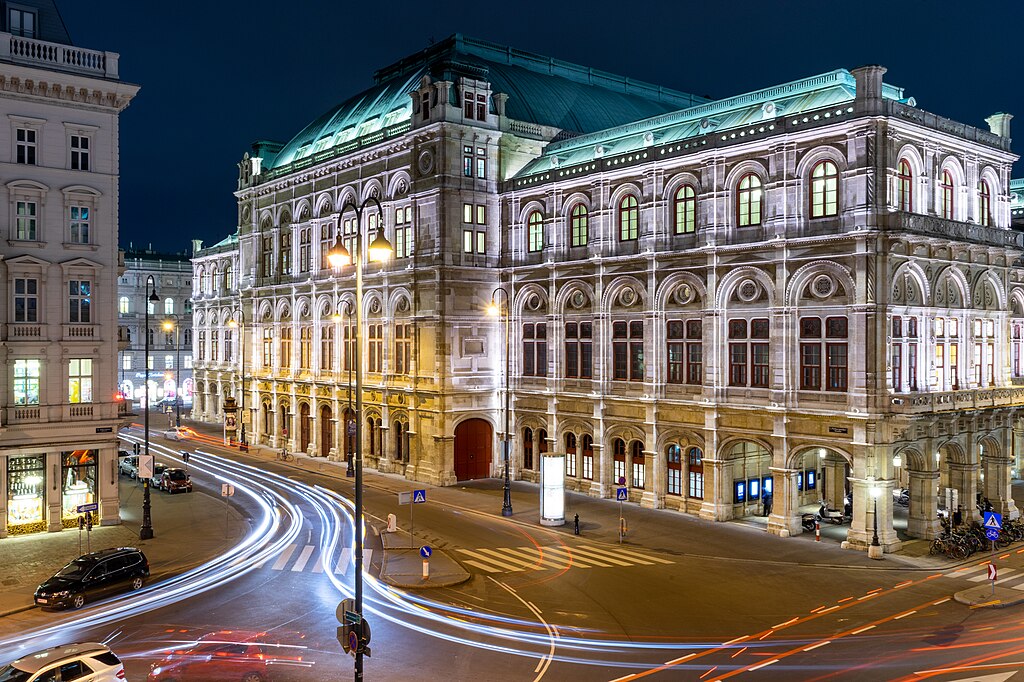
One of Vienna’s most well-known buildings is the State Opera House. It was constructed in the Renaissance Revival Style and embodies many of the ideals of the Renaissance Movement. The exterior facade has a meticulously designed blend of symmetry, proportion, repetition, and hierarchy. The Opera House also contains a variety of Classical details including round arches, balustrades, and statues.
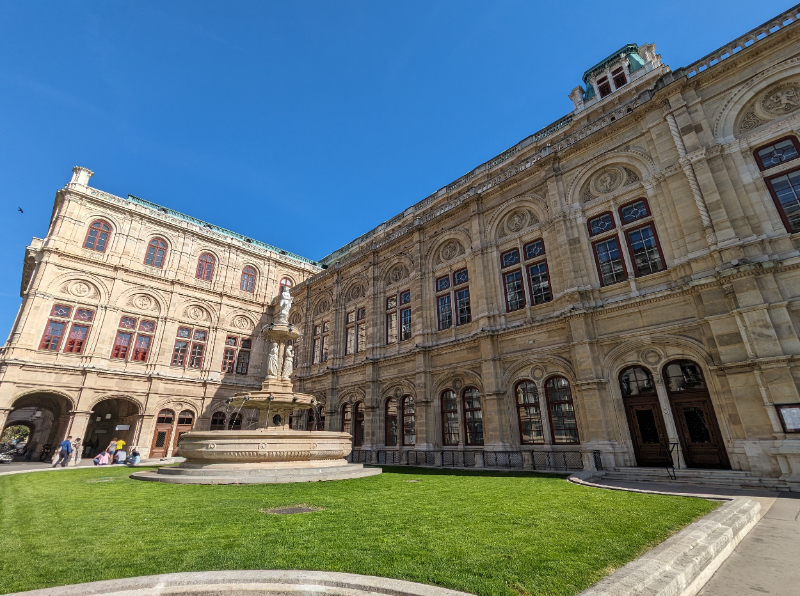
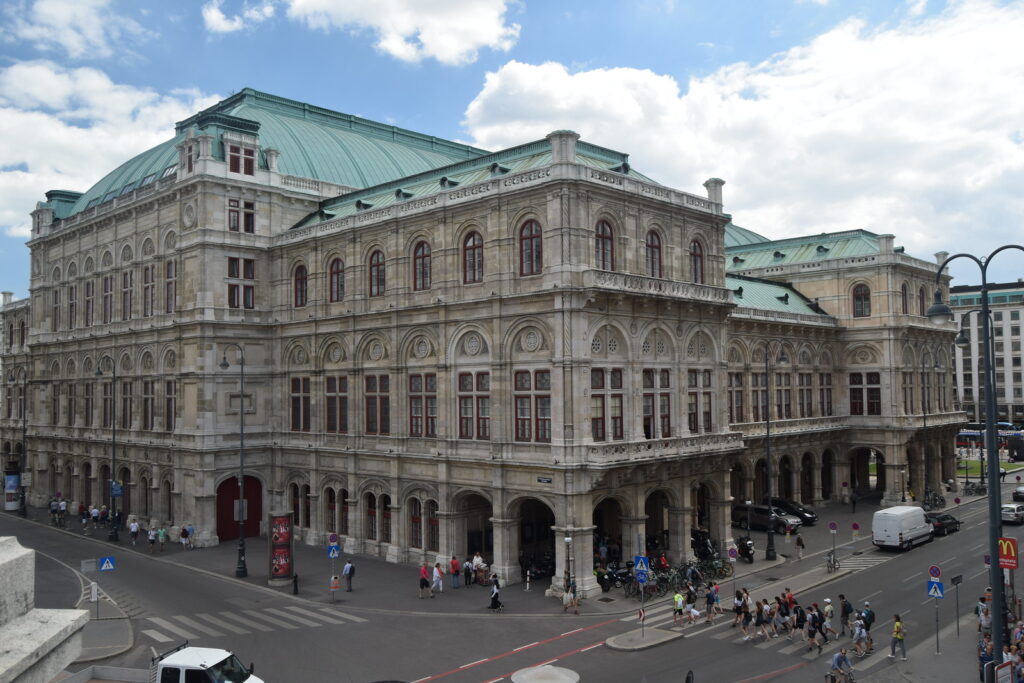
Opera was a popular form of entertainment during the 1800s. Thanks to its popularity, many European cities constructed large opera houses at this point in time. Some of the largest can be found in Paris, Budapest, and Palermo, and the Vienna State Opera House ranks as the world’s sixth largest. The building takes up a large portion of the Ringstrasse and is located near other monuments such as the Albertina and Karlskirche.
2. Museum of Fine Arts & Museum of Natural History
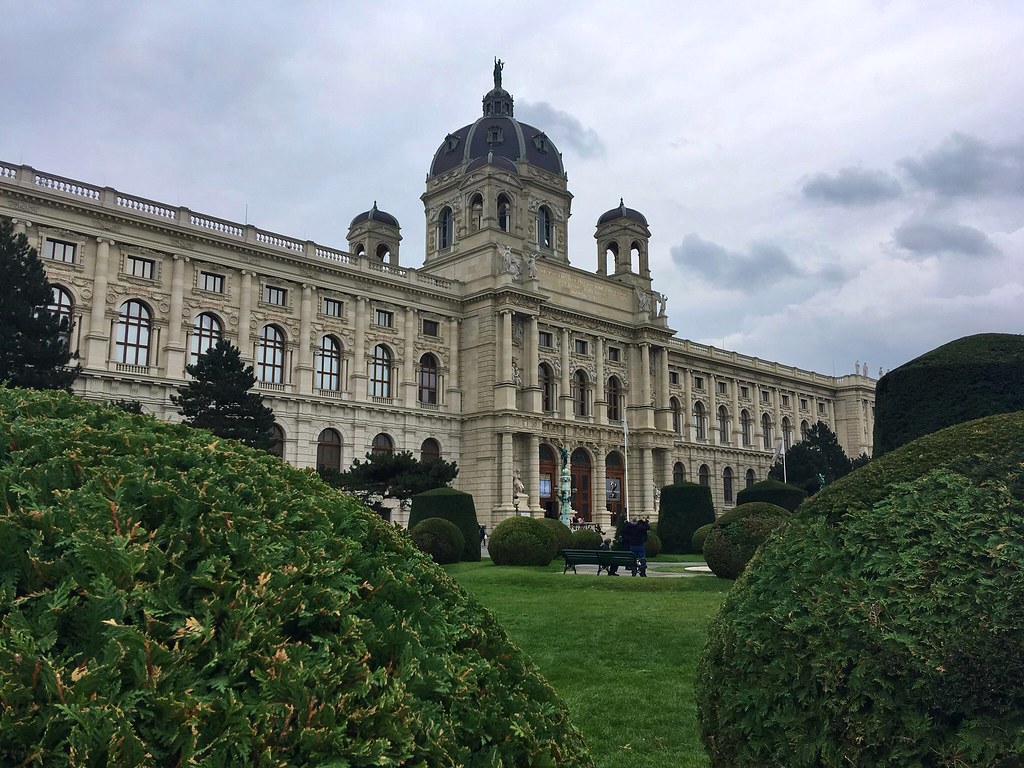
The Museum of Fine Arts and the Natural History Museum are two buildings designed in the Baroque Revival Style. Both buildings are near exact copies of one another, and they sit across from each other overlooking a square known as the Maria-Theresien-Platz. The square is named for Empress Maria Theresa of Austria, who was the ruler of the House of Habsburg from 1740 until 1780.
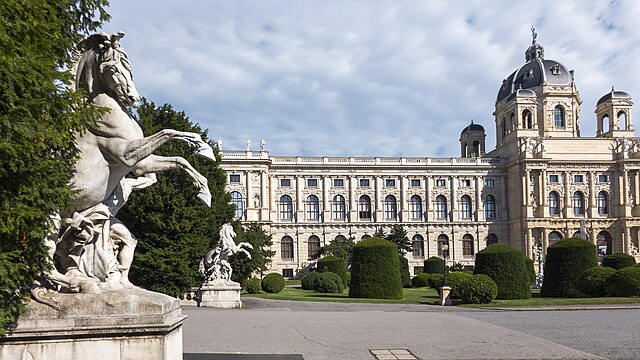
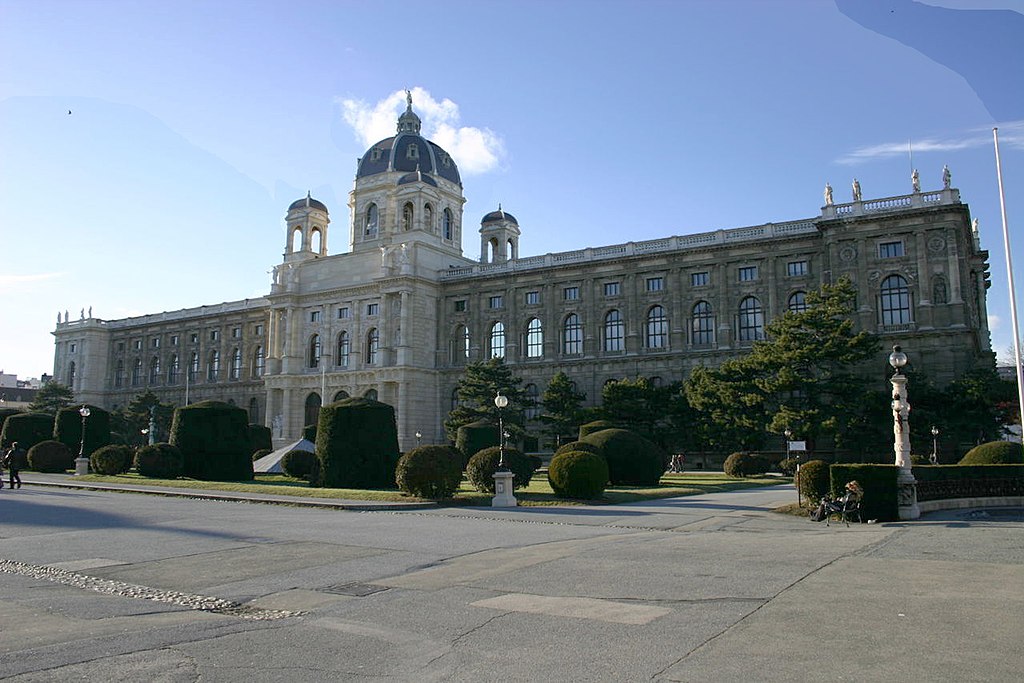
Both museums contain a plethora of artwork and artifacts, many of which pertain to Austrian History. The exteriors of the two buildings contain all the typical characteristics of the Baroque Revival Style. Just like Baroque Architecture, they are designed to be awe-inspiring and grandiose. They contain lavish materials, impressive details, and complex geometries. Both museums are among the most popular in Vienna and contain some of the city’s most cherished possessions. To get a sense of the entire Maria-Theresien-Platz you can check out this Photo Sphere which shows the relationship between both museums.
3. Rathaus
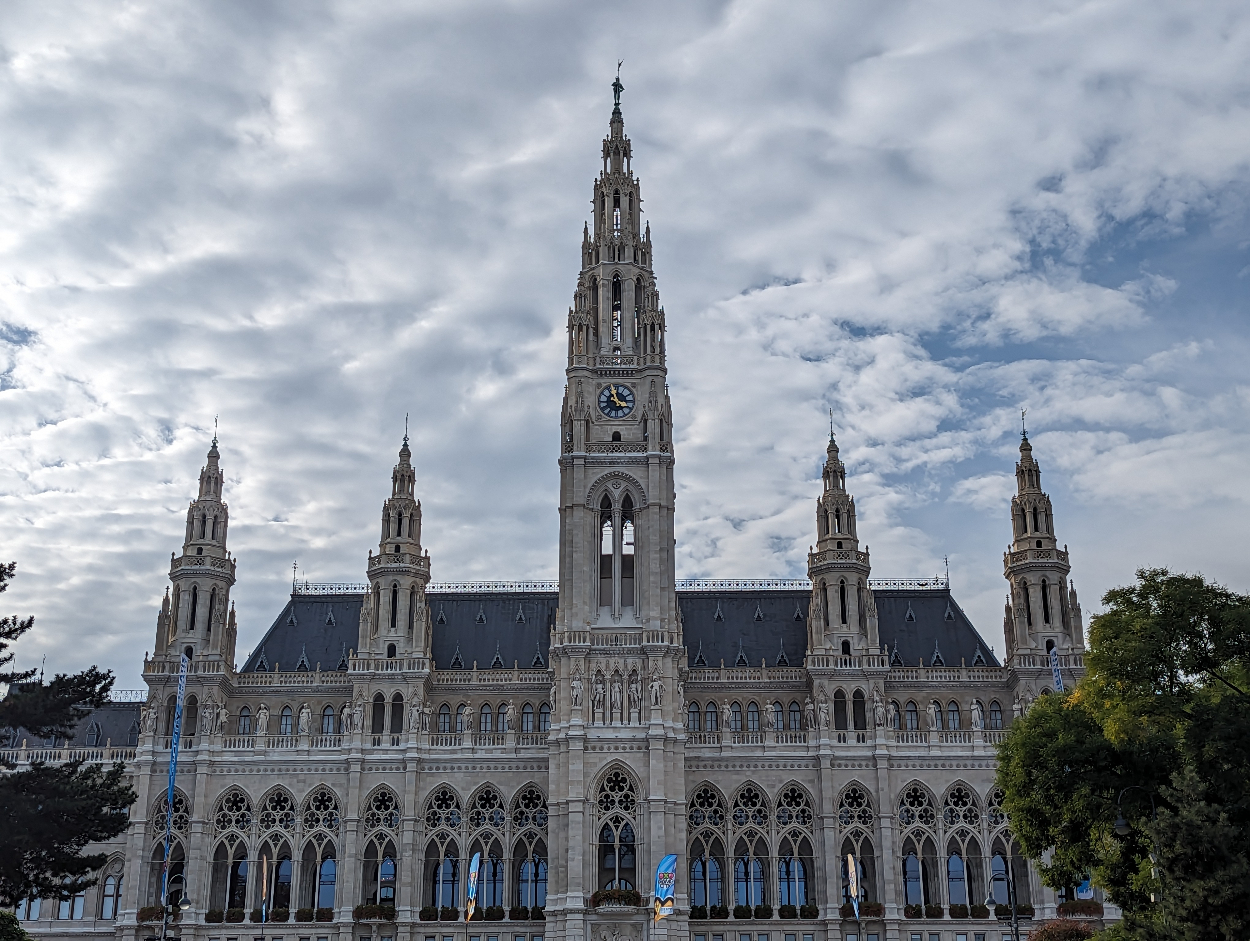
The Rathaus, or City Hall, is an impressive building located within Vienna’s Ringstrasse. It was designed in the Gothic Revival Style which was chosen partly to connect the building with other Rathauses across Germany and Austria. The building’s most striking feature is its central tower, which overlooks the Rathauspark below. The Rathaus contains all of the typical elements of the Gothic Style, including pointed arches, spires, and Gothic tracery. The Rathaus still serves its original purpose and houses the local government of Vienna.
4. Austrian Parliament Building
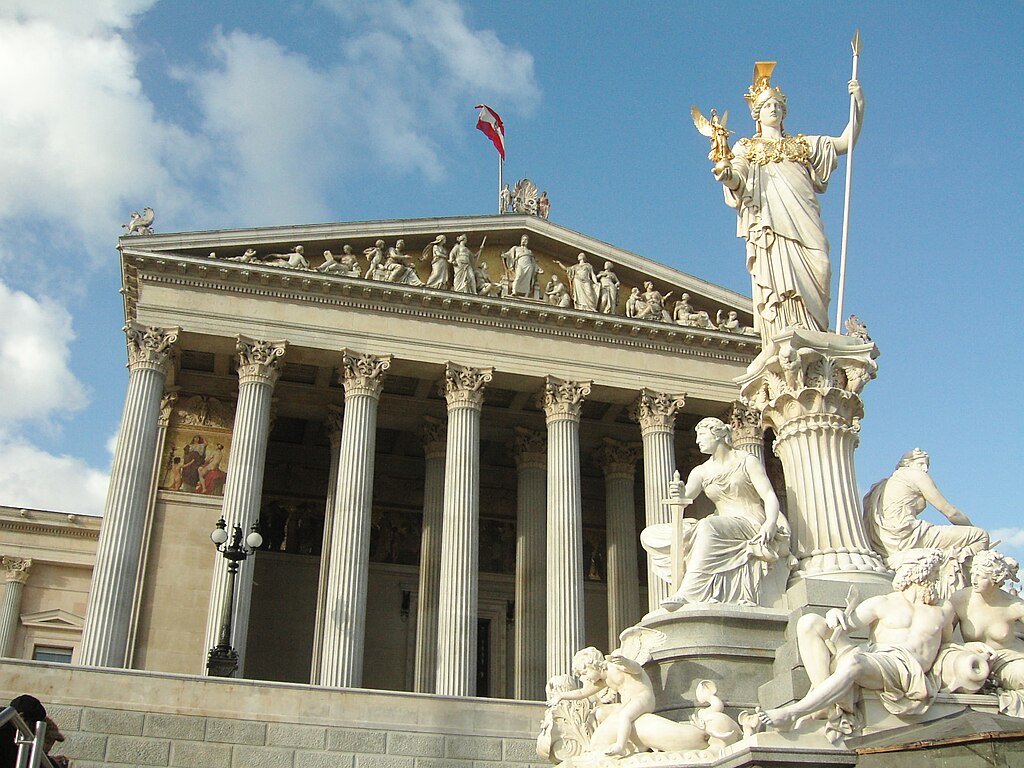
The Austrian Parliament Building is an impressive example of Neoclassical Architecture in Vienna. It was constructed from 1874-1883 and is one of the many impressive buildings located along the Ringstrasse. The main idea behind Neoclassical Architecture is to recreate the buildings of the Ancient Greeks and Romans. The Austrian Parliament is meant to copy the design of a typical Roman or Greek Temple. It has a main facade with a triangular pediment, above Corinthian columns, which then sit atop a large plinth. The building’s exterior also contains a series of Classical Statues, including one depicting the goddess Athena – which you can see in the image above.
5. Burgtheater
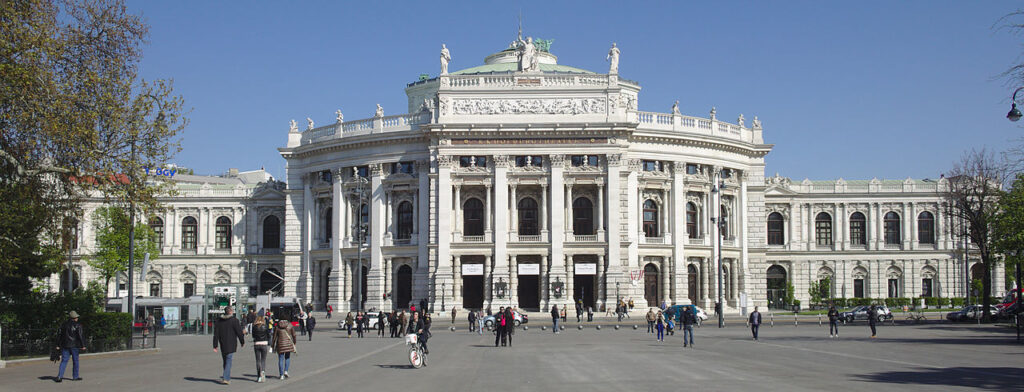
Along with Opera, theater was another artistic medium that was extremely popular during the 19th century. Vienna is home to several impressive theaters, most notably, the Burgtheater. The Burgtheater was designed in the Baroque Revival Style and lies within the Ringstrasse. The building still holds frequent performances which helps contribute to the vibrant arts and cultural scene that modern-day Vienna is famous for.
6. Palace of Justice
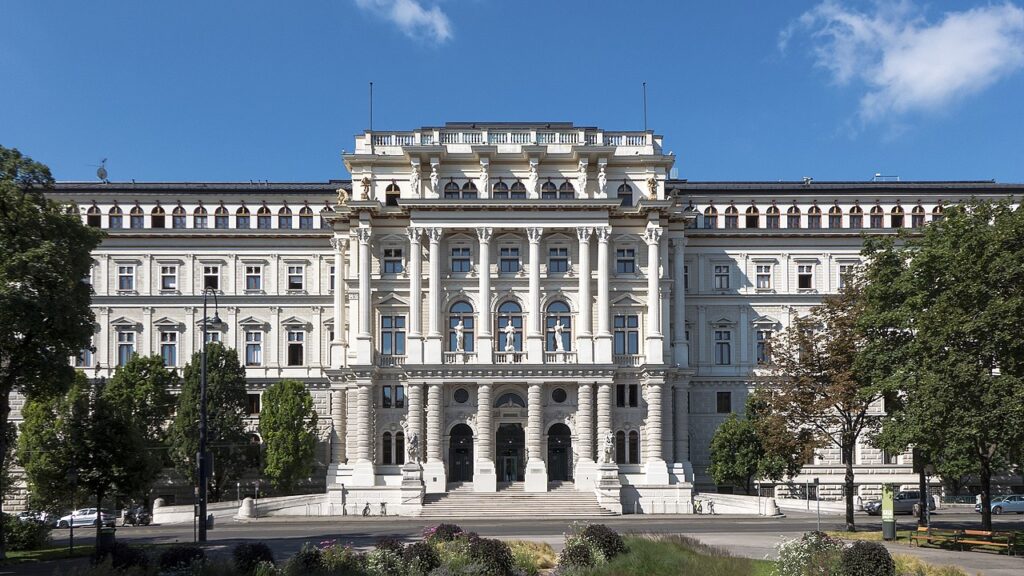
The Palace of Justice is an important municipal building in Vienna designed in the Renaissance Revival Style. It’s located within the Ringstrasse not far from the State Opera House. The Palace of Justice features all of the typical elements found in Renaissance designs including symmetry, repetition, and the use of proportions and the Golden Ratio. The facade of the building is also decorated with Corinthian Columns, pediments, round arches, and Classical Statues.
7. Hofburg Palace (NeoClassical Facade)
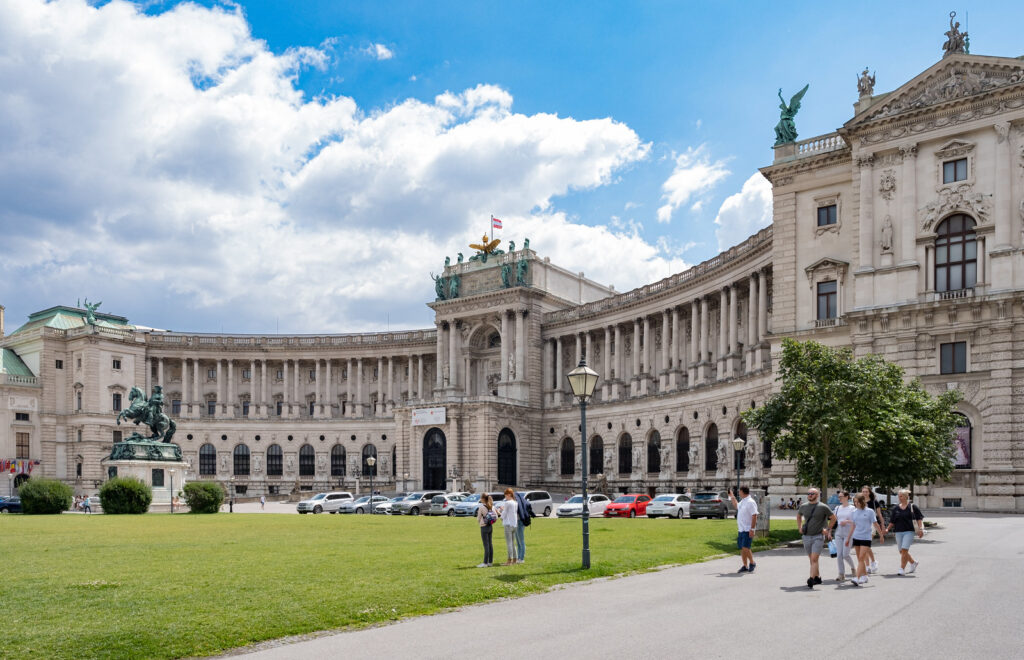
Hofburg Palace is the large royal residence of the Habsburgs located in central Vienna. The Hofburg was built over several centuries and has wings designed in both the Renaissance and Baroque Styles. The image above shows one of the newer additions to the building. This facade dates from the late 19th century and was designed in the Neoclassical Style. This wing was built by Franz Joseph, the final ruler of the Austrian Empire. Franz Joseph lost power after WWI, and his empire was broken up forming several modern nations including Austria, Hungary, and the Czech Republic.
8. Votivkirche
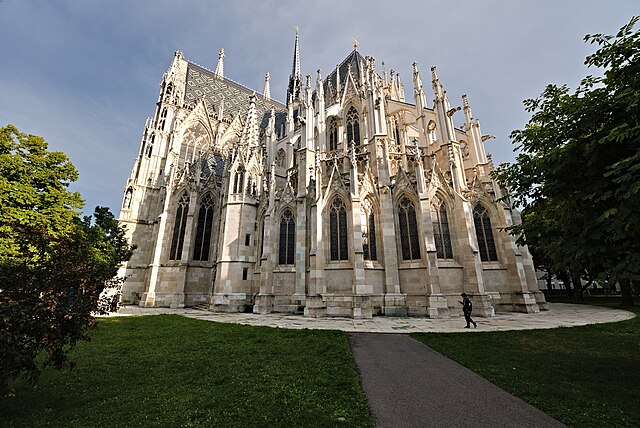
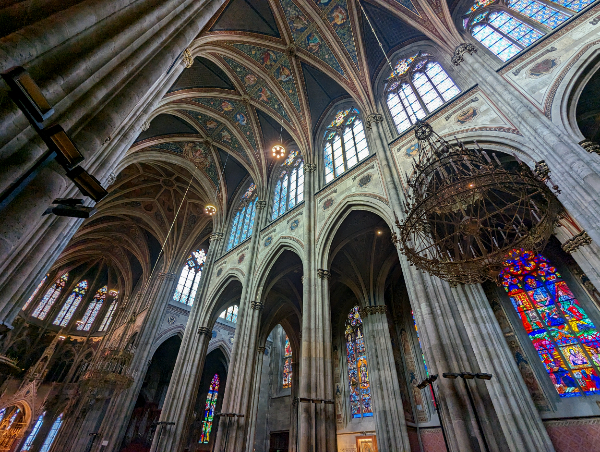
Located on the northwestern border of the Ringstrasse is the Votivkirche. The building is one of Vienna’s greatest examples of Gothic Revival Architecture. It was completed in the 1870s during the reign of Austrian Emperor Franz Joseph. The Votivkirche contains all of the typical characteristics of the Gothic Style, including pointed arches, spires, and flying buttresses. It also contains some of Vienna’s greatest Stained Glass Windows, many of which survived the bombs of WWII.
9. St. Francis of Assisi Church
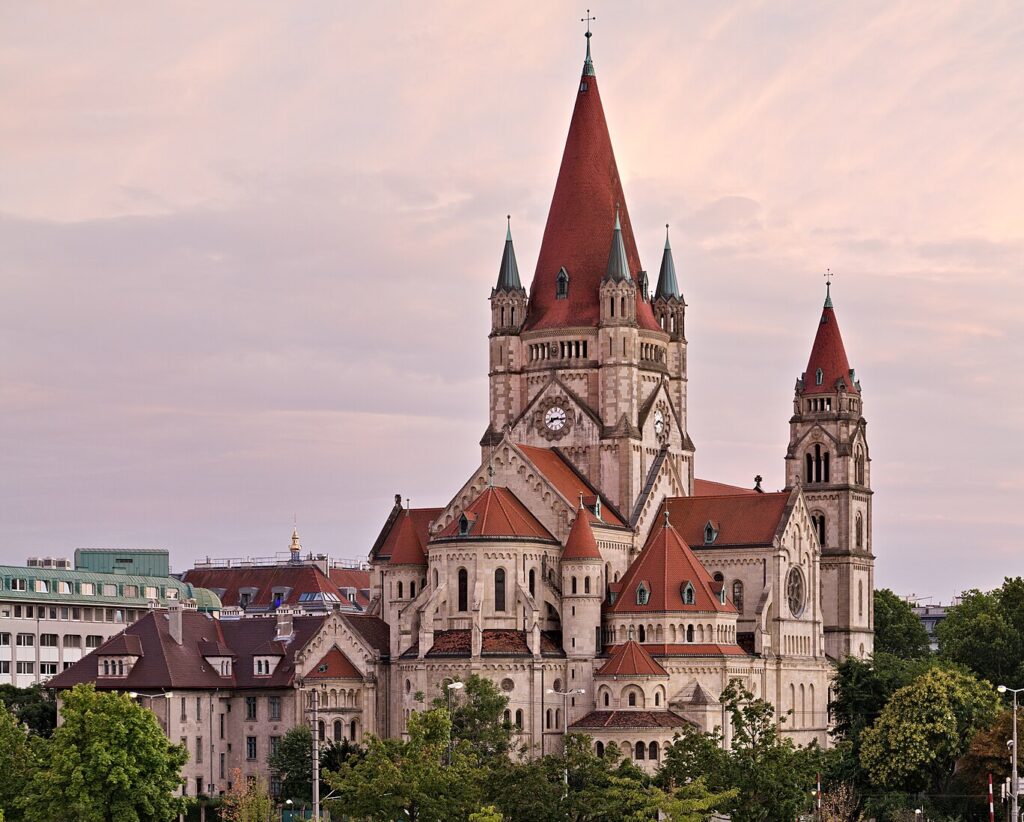
The Church of St. Francis of Assisi is located across the Danube River from Vienna’s historic center. It is Vienna’s greatest work of Romanesque Revival Architecture. It was completed in 1910 and is one of the largest churches in this part of the city. The church borrows all of its characteristics from the Romanesque Style. It has a strong medieval influence and utilizes round arches and bold simplified forms.
10. Theseustempel
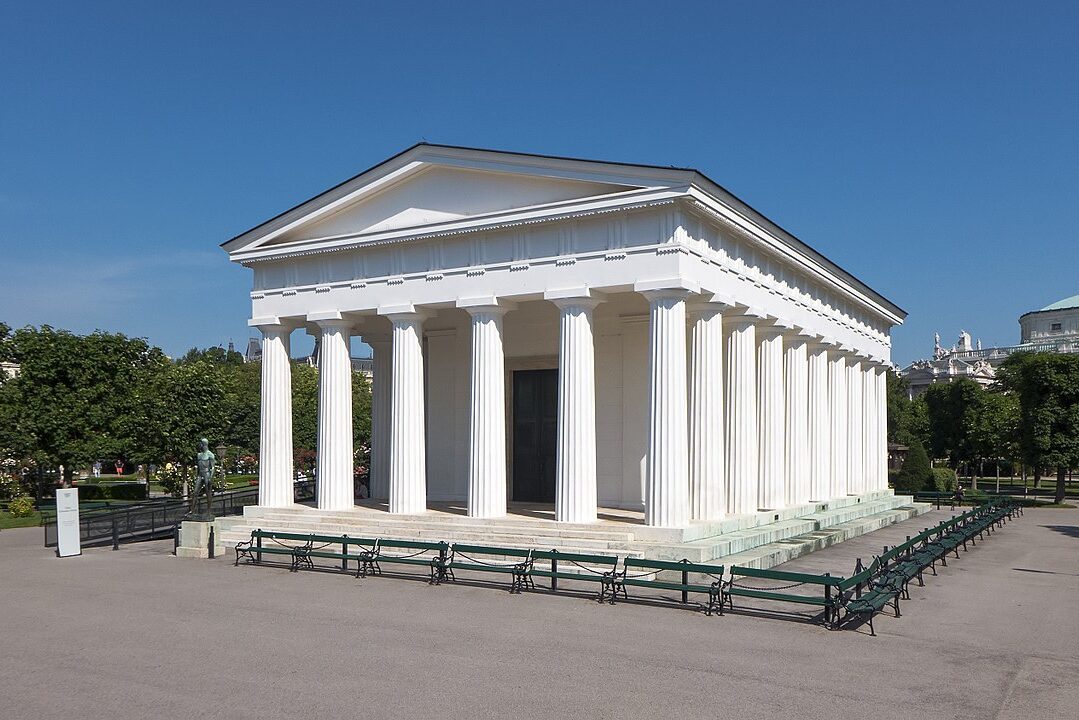
The Theseustempel is an interesting example of Neoclassical Architecture located in Vienna’s Ringstrasse. It is a near-exact replica of an Ancient Greek temple. The temple is in the Doric Order – an early typology that contains simpler detailing than Ionic and Corinthian Temples. This fascination with historic architecture was common during the Revival Period, and there are many similar temples located throughout Europe and North America.
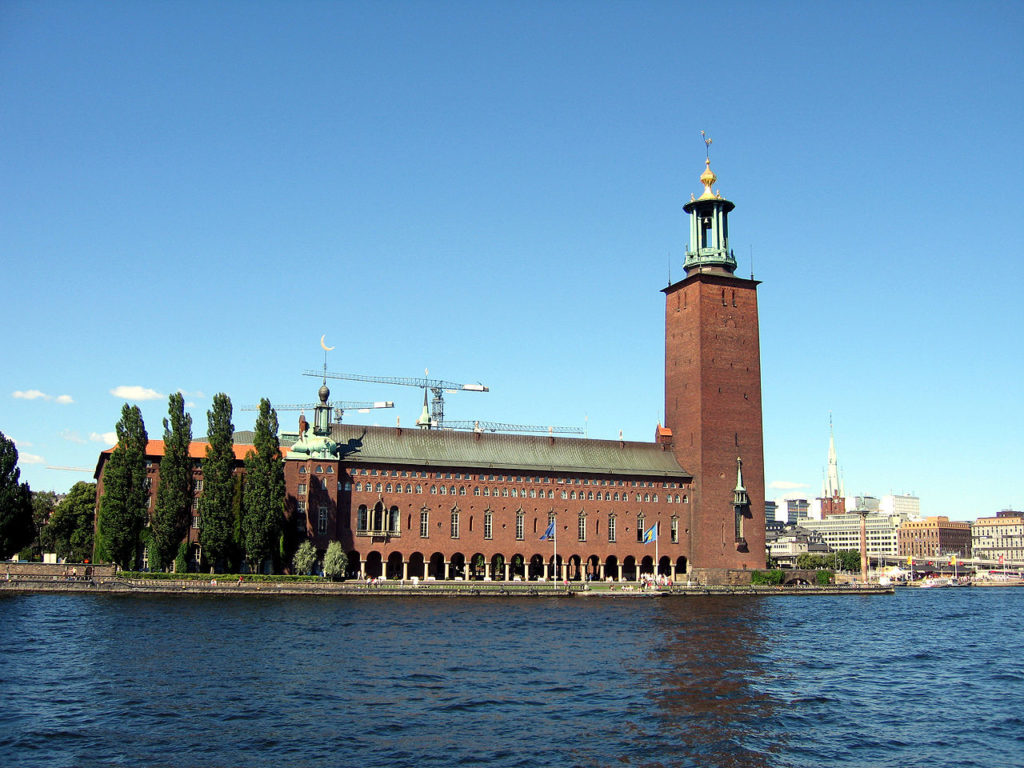
Interested in Revival Architecture? Check out our article on the Architecture of Stockholm to see more great examples of Revival Style Buildings.
Art Deco & Art Nouveau Architecture in Vienna
Art Nouveau Architecture emerged in the 1890s and was very popular throughout the early 1900s. The movement emphasized fluid and organic curves and often incorporated elements from nature. Art Nouveau was one of the “Art” styles of architecture, and it coexisted with other styles like Art Deco and Beaux Arts. All of these styles were a reaction to the Revival Movement. Many architects wanted to break away from traditionalism and design much more sculptural and artistic buildings. Along with Paris, Brussels, and Prague, Vienna was one of the key cities within the Art Nouveau Movement, and there are many unique examples of this style throughout the Innere Stadt neighborhood.
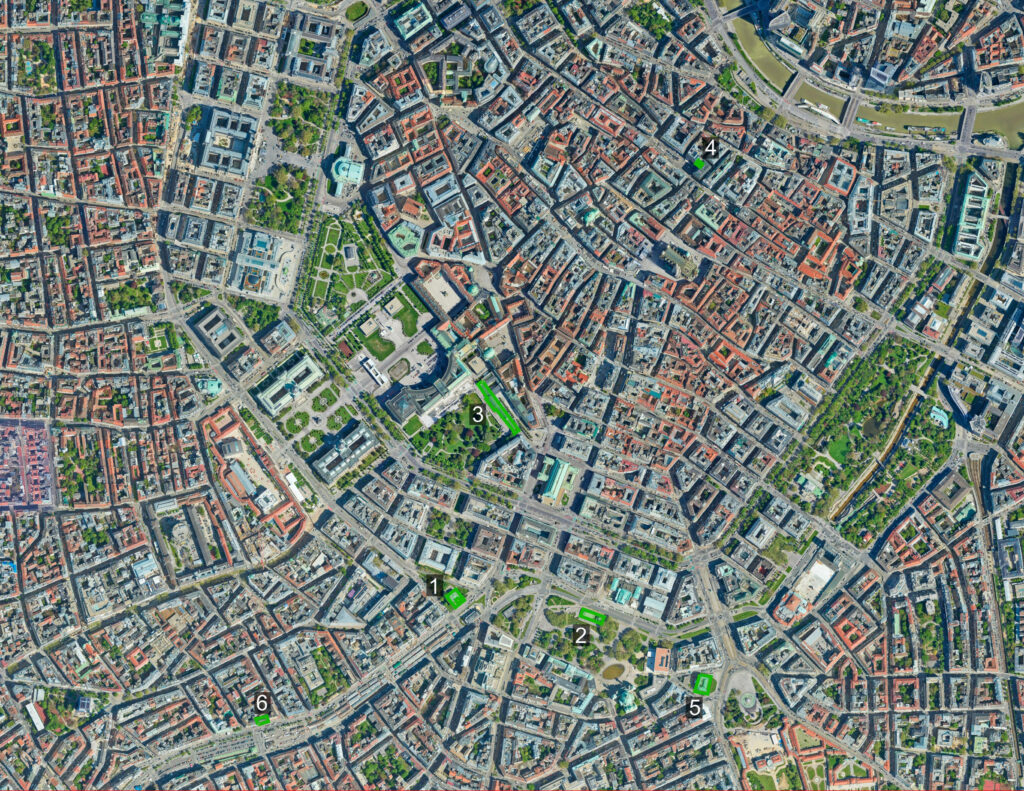
Map of Vienna highlighting several works of Art Deco & Art Nouveau Architecture within the city.
1. Secession Building
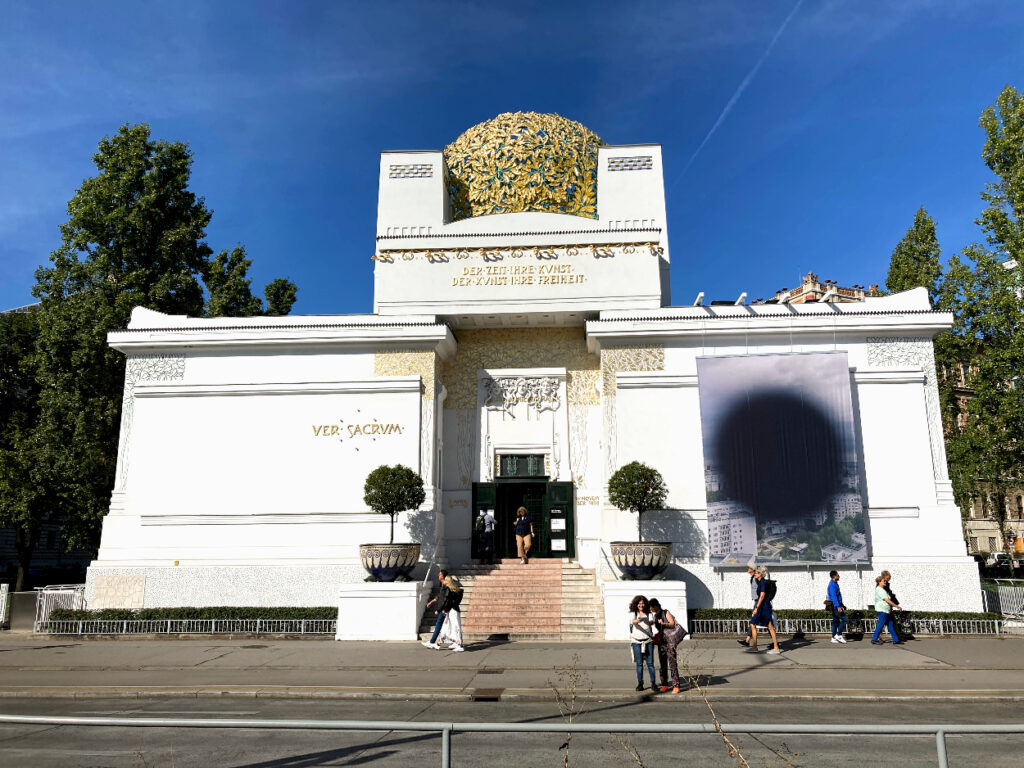
The Vienna Secession Building is an exhibition space that was constructed in the late 1890s. It’s an early work from the Vienna Secession Movement, an artistic ideology that emerged alongside the Art Nouveau Style. The building’s most distinct feature is the dome-like sphere that sits above its main facade. This sphere combines several of the typical elements of Art Nouveau Architecture. It’s composed of an intricate web of interconnected leaves, and it’s made from iron that has been embellished with gold leaf. The Vienna Secession Building also has a strong influence from Art Deco Architecture, which was also popularized at the turn of the century.
2. Karlsplatz Station
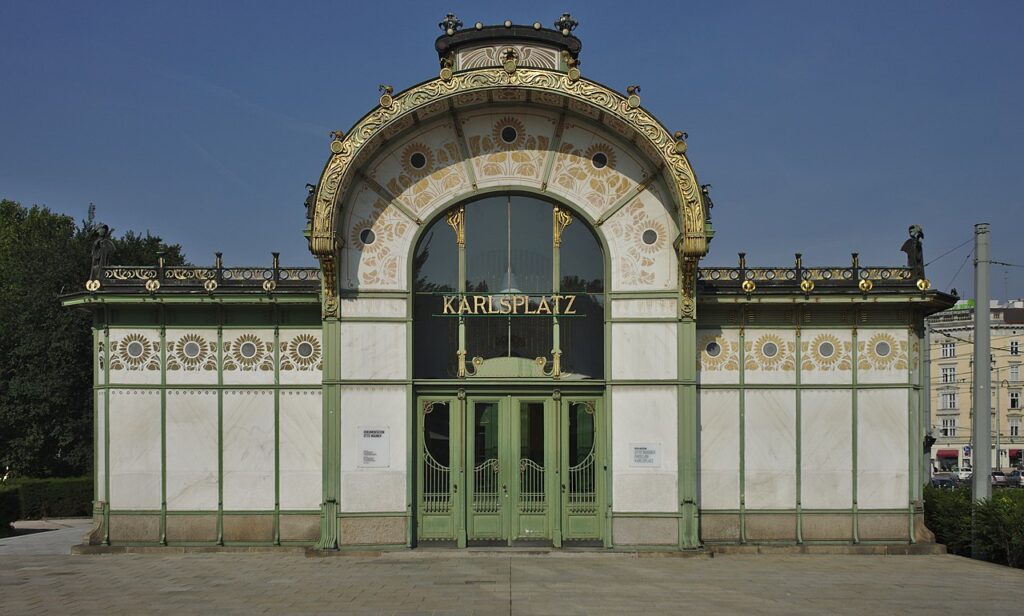
The Karlzplatz Station is a former metro station located within the Ringstrasse. It was constructed as part of a major metro expansion that took place in turn-of-the-century Vienna. The station opened in 1899 and operated until the 1980s. The building utilizes several key components from the Art Nouveau Style, including decorative iron elements and the use of Art Nouveau fonts and signage.
3. Hofburg Palace Palm House
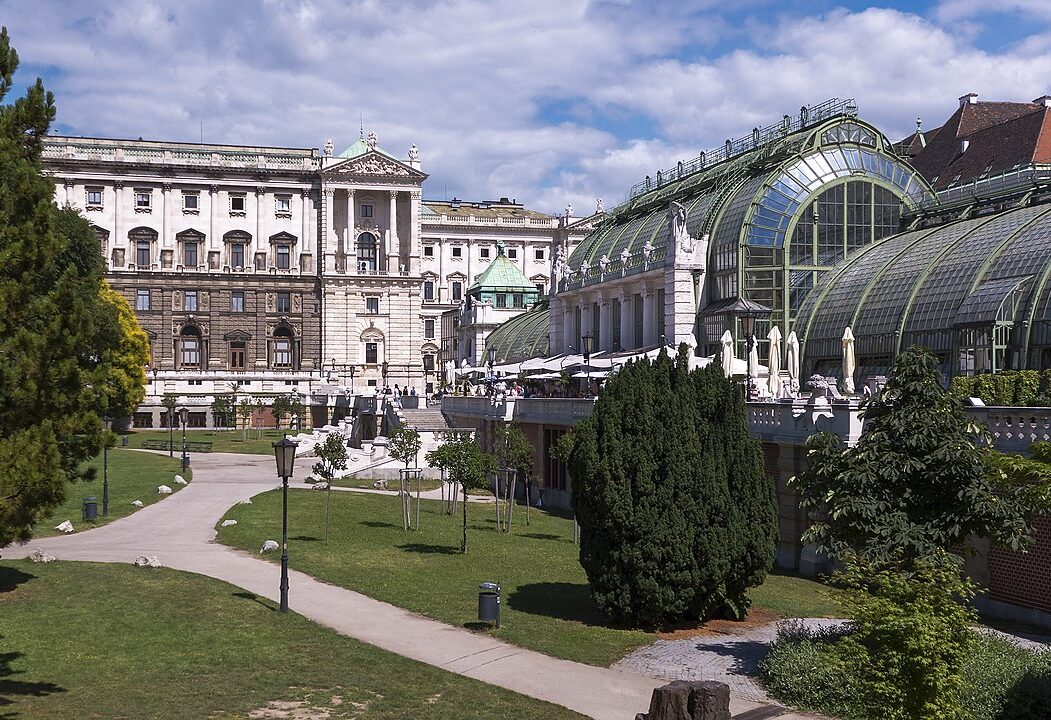
One of the final additions to the Hofburg Palace was the Palm House. The structure was designed to hold palm trees and other plant species that are not native to the cold Austrian climate. The building is made primarily of glass and iron and was designed with contemporary construction techniques that were new in the early 1900s. Today the building is home to a popular cafe and it’s a great place to enjoy Vienna’s popular cafe culture.
4. Anker Clock
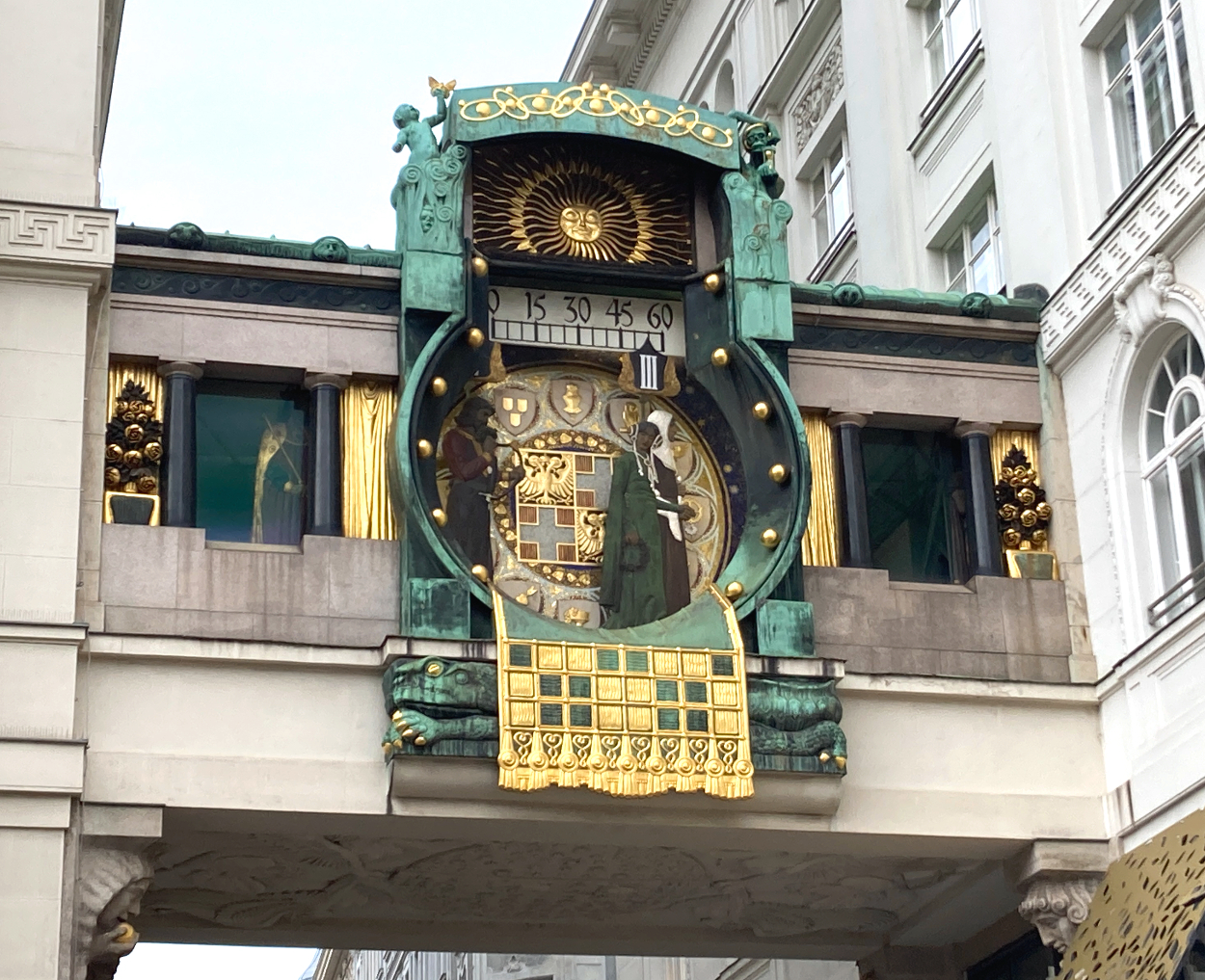
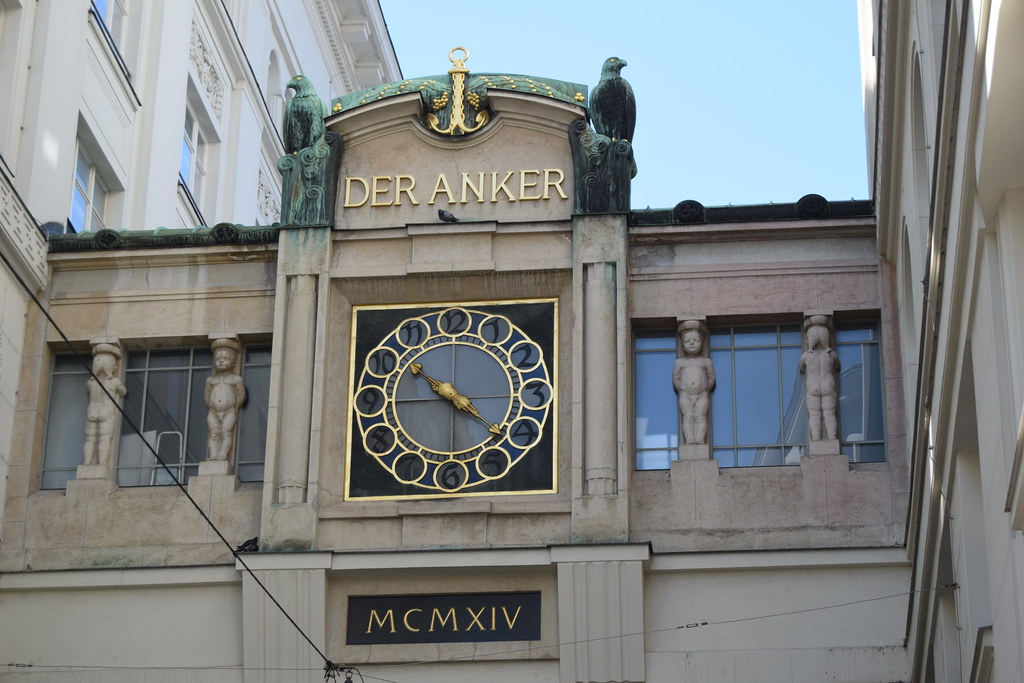
The Anker Clock is a small Art-Nouveau addition that decorates a bridge connecting two buildings. The clock was completed in 1914 and combines many of the key elements from the Art Nouveau Style. The clock tells not just the time, but also the different phases of the moon and other celestial bodies. Astronomical Clocks such as these are very popular in Central Europe and can be found in other cities like Prague & Munich.
5. French Embassy
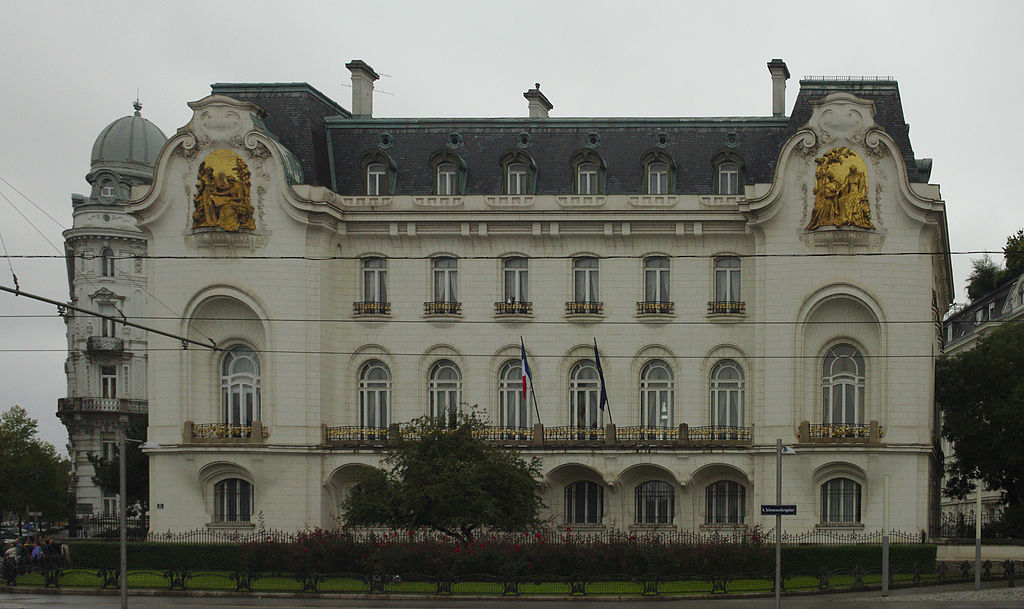
The French Embassy is another impressive Art Nouveau Building located close to other sites in Vienna such as Belvedere Palace. It was constructed in the early 1900s as the residence of a wealthy Viennese family. Today it serves as the French Embassy for the Nation of Austria. The Embassy building contains a grandiose main facade with curving and undulating forms that were common in Art Nouveau Architecture.
6. Majolikahaus
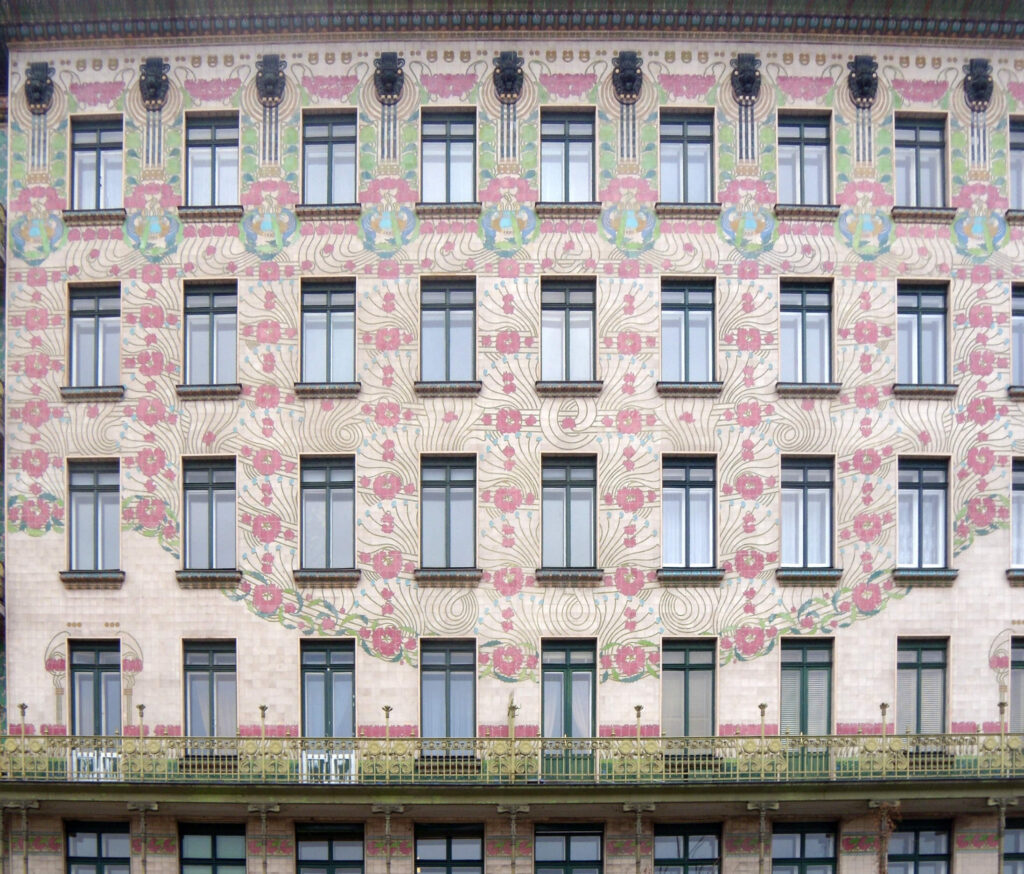
The Majolikahaus is one of the more subdued examples of Art Nouveau Architecture in Vienna. While it doesn’t have the same complex and organic form as many other Art Nouveau Structures, it still bears an iconic Art Nouveau-style mural on its main facade. The mural is reminiscent of the artwork of Alphonse Mucha, and it faces one of Vienna’s busiest streets.
Modern Architecture in Vienna
Modern-day Vienna is a sprawling metropolis that has expanded considerably from its original Medieval footprint. Vienna now occupies both sides of the Danube River and has multiple districts surrounding the Innere Stadt. There are dozens of notable contemporary buildings in the city, dating from just before WWII, up until today. Modern-day Vienna has a thriving economy and contains many new mixed-use buildings and infrastructure facilities.
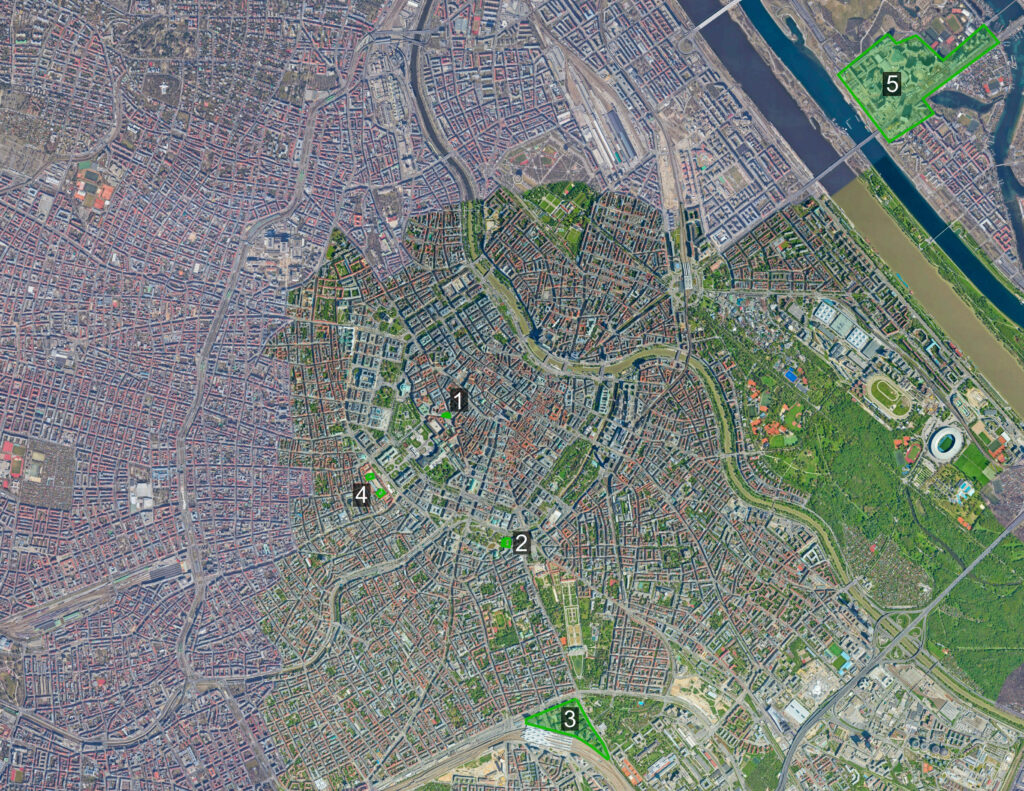
Map of Vienna highlighting several works of Modern Architecture within the city.
1. Looshaus
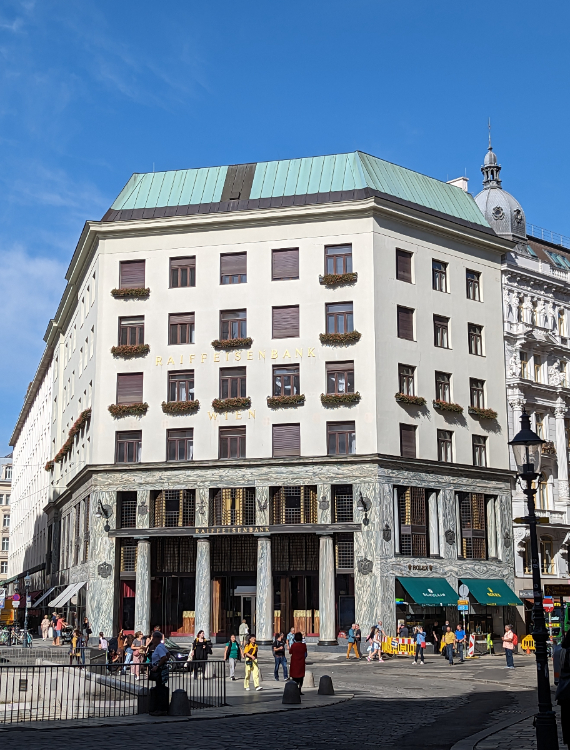
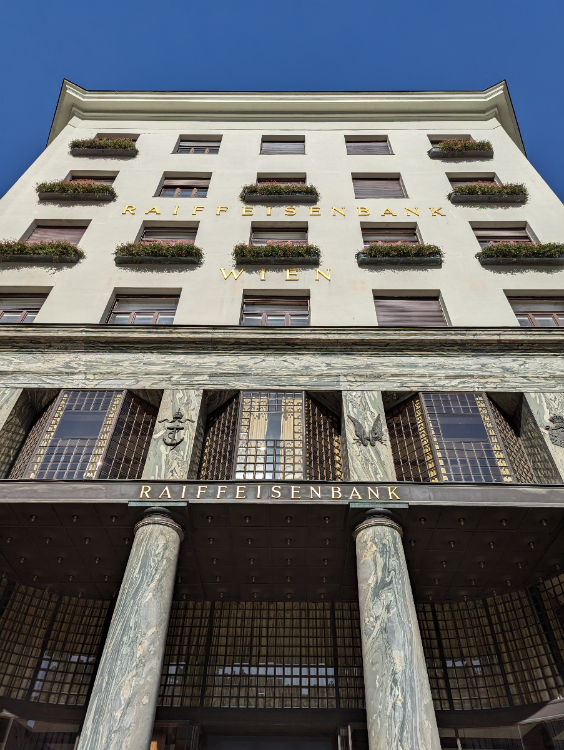
Adolf Loos was an architect who worked throughout Central Europe in the mid-1900s. He was considered a pioneer of Modernism and his work greatly influenced the evolution of mid-century art and architecture. The Looshaus is one of his most notable buildings. It’s located just across from the Baroque Facades of the Hofburg Palace. The Looshaus contains clean lines and simple materials, all key components in Loos’ designs. The simple forms and lack of ornamentation were unique in Vienna at the time, and the building received mixed reviews upon its completion.
2. The Vienna Museum

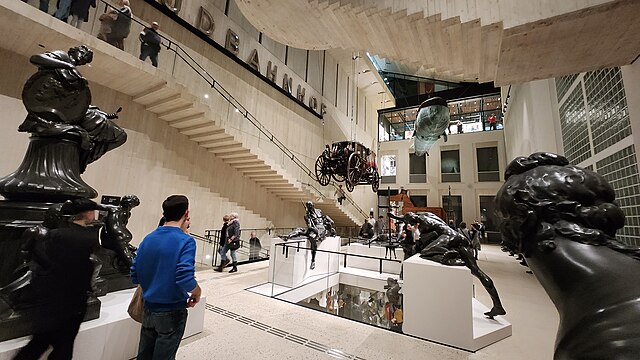
The Vienna Museum is one of the city’s most impressive works of Modern Architecture. The architect was chosen after a lengthy design competition, in which nearly 100 different people were considered. The building was completed in 1959 and utilizes many modern materials like concrete and glass. The museum contains a collection of artifacts all focused on the history of the city of Vienna. There are pieces dating from the Neolithic Age, all the way up to the modern era.
3. Quartier Belvedere
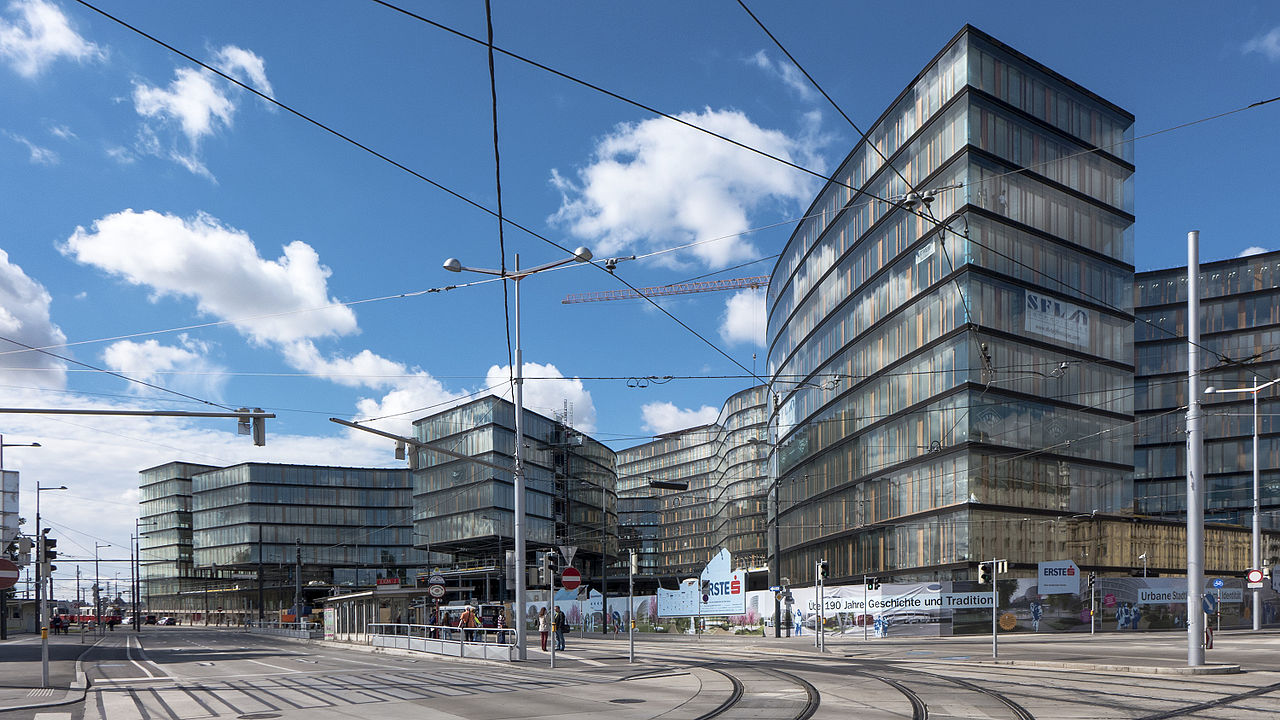
The Quartier Belvedere is a large collection of modern buildings located between Belvedere Palace and Vienna’s Central Train Station. The area is mixed-use and contains restaurants, retailers, apartments, and offices. It’s a convenient spot for many Viennese locals thanks to its proximity to major transportation hubs and the city center. All of the buildings utilize a similar aesthetic with angular forms and sleek glass facades.
4. Mumok & Leopold Museums
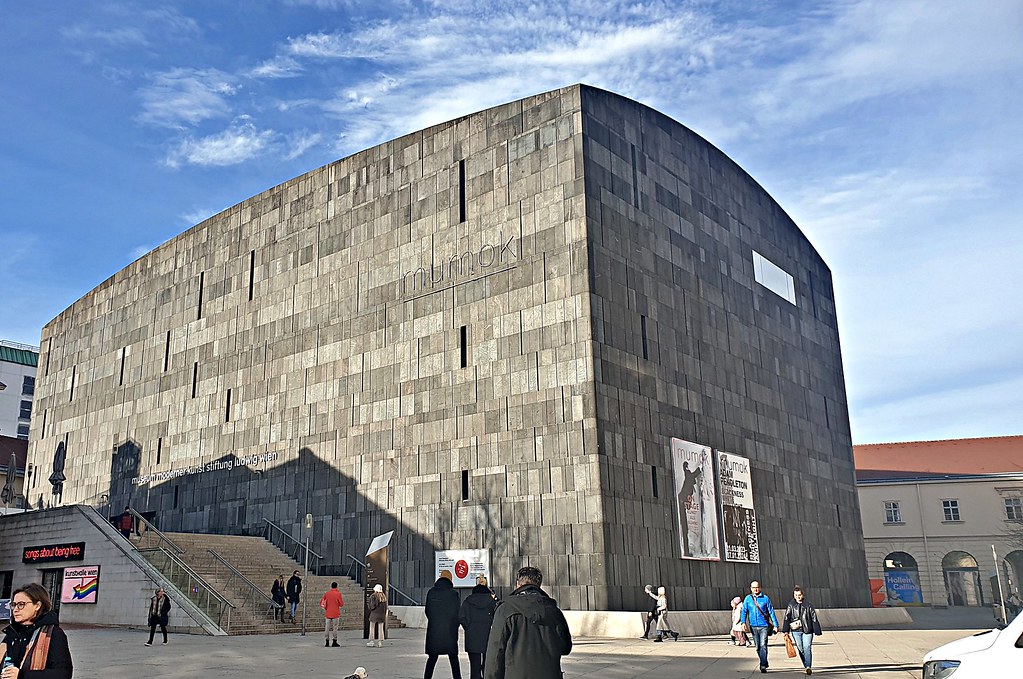
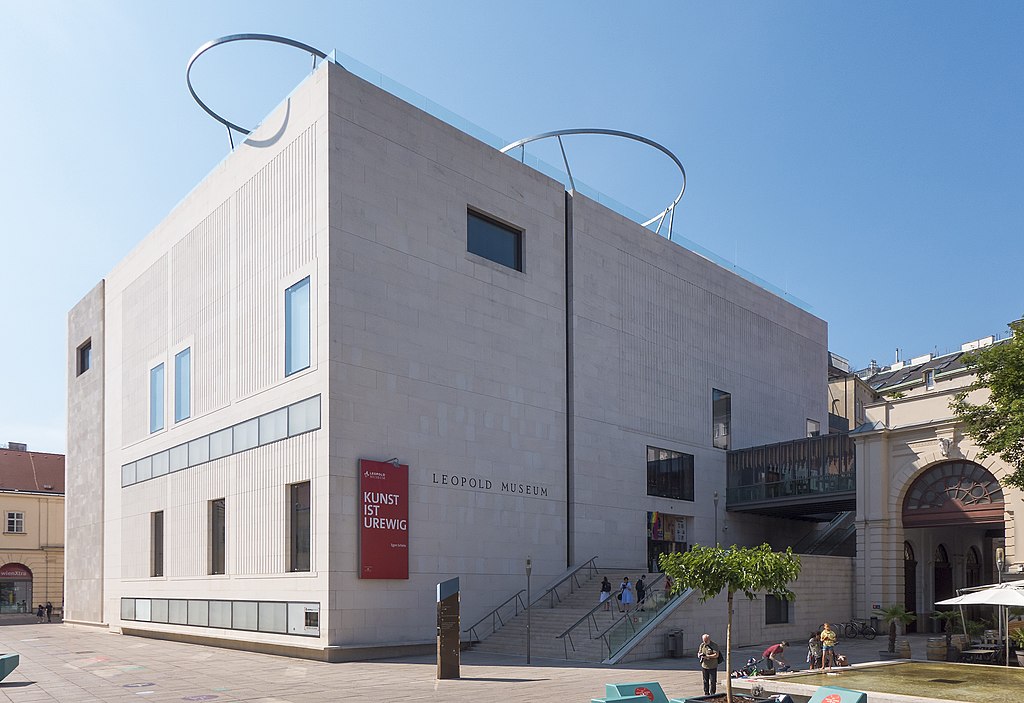
Vienna’s Museum Quarter is a collection of buildings housing various traditional and contemporary art museums. Two of the more modern structures in the area are the Mumok Museum and the Leopold Museum. The Mumok has a unique form resembling a large boulder, while the Leopold Museum is boxy and minimalistic. Both museums were completed in 2001 and house works of contemporary art. The Leopold is famed for its collection of works from Austrian artist Gustav Klimt.
5. Vienna International Centre & Surrounding Area
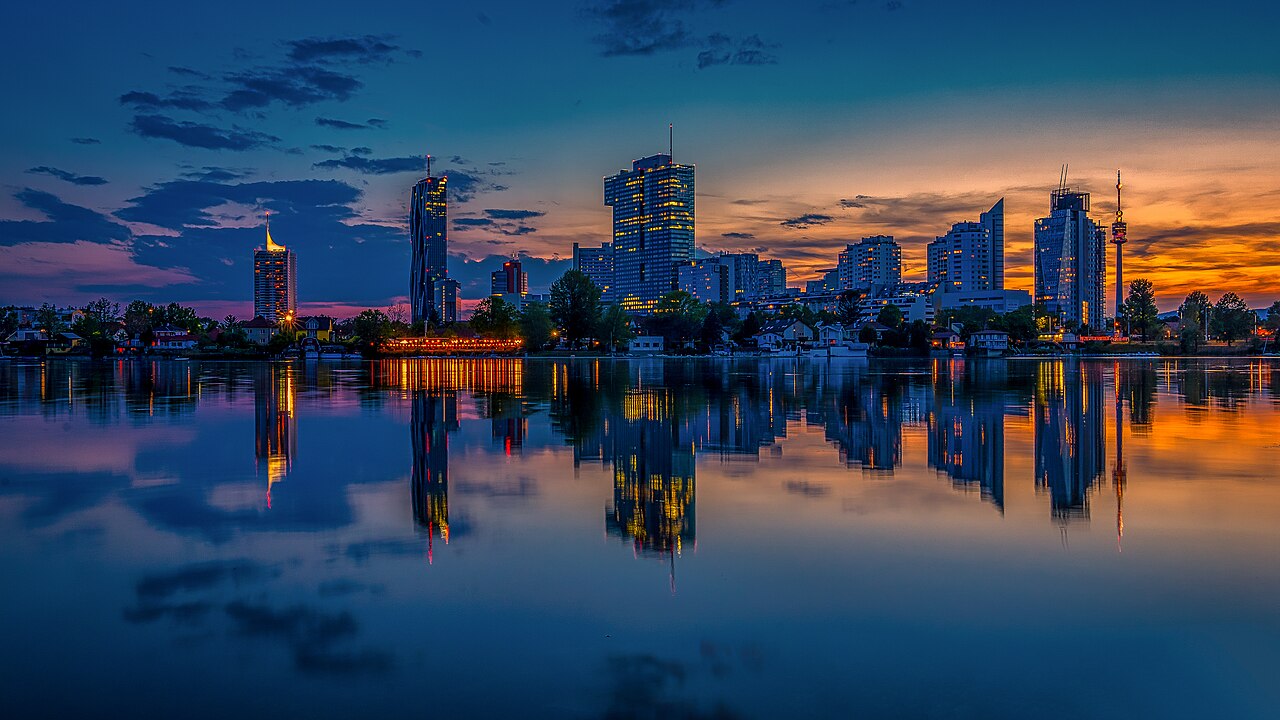
Like many European cities, Vienna has strict zoning regulations that limit the heights of buildings in certain sections. The image above shows the area around the Vienna International Centre, where buildings are permitted to be taller than in other parts of the city. These sleek contemporary buildings contain modern materials like structural steel, concrete, and glass. This area is one of the key business districts within Vienna, and it has helped propel the city into the economic powerhouse it is today.
Neighborhoods of Vienna
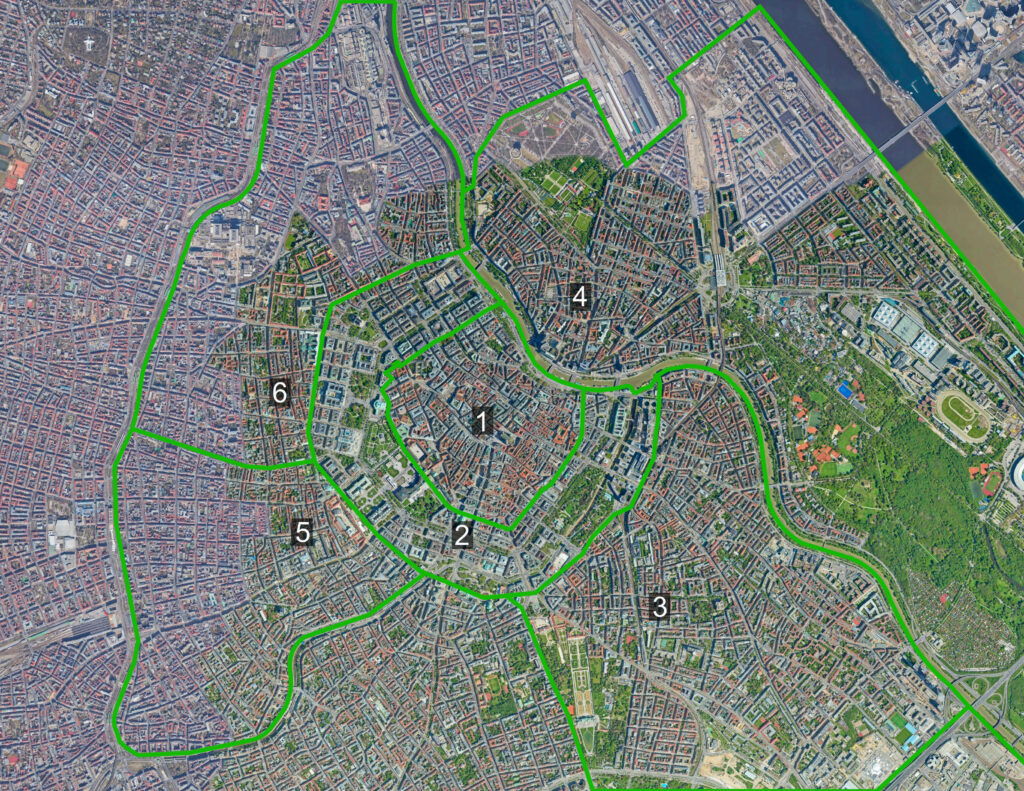
Map of Vienna showing the extent of various neighborhoods within the city.
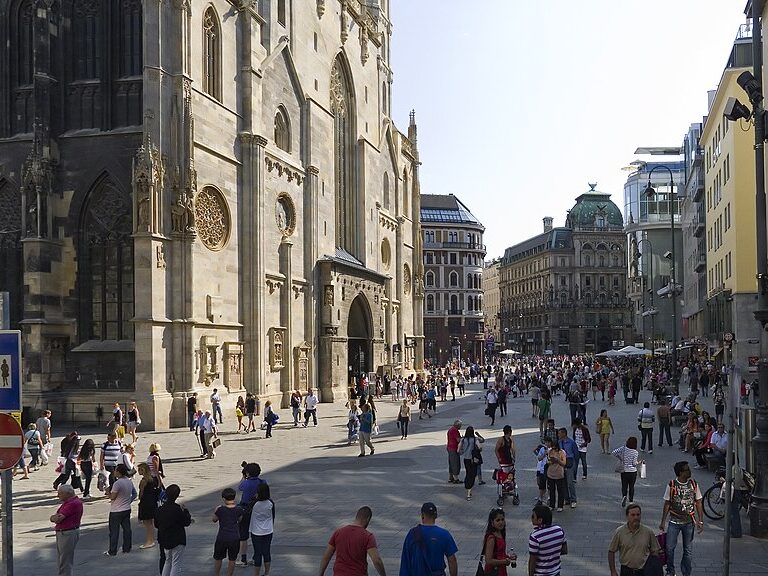
1. Innere Stadt
The Innere Stadt is a popular neighborhood in Vienna that corresponds to the city’s historic center. It is the most touristy part of the city and contains lots of hotels, bars, and restaurants. The Innere Stadt also has most of Vienna’s oldest buildings, like St. Stephen’s Cathedral and the Hofburg Palace.
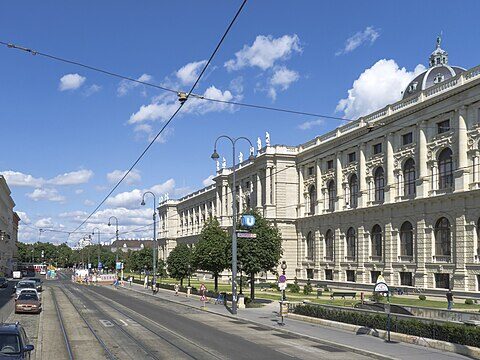
2. Ringstrasse
The Ringstrasse is a circular area that surrounds the Innere Stadt. It was once occupied by Vienna’s Baroque Age fortification network, which was torn down in the 19th century. The newly cleared space was redeveloped into a ring of roads, parks, and impressive buildings. Today the Ringstrasse contains several of the greatest works of architecture in Vienna such as the State Opera House and the Rathaus.
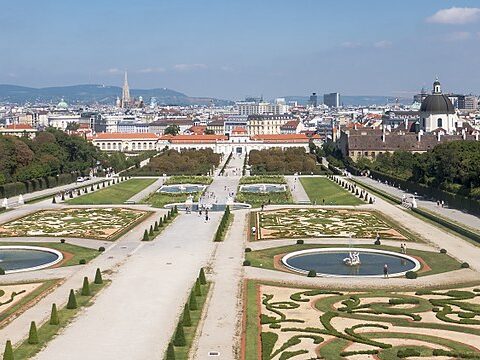
3. Landstrasse
The Landstrasse Neighborhood sits southeast of Vienna’s historic center. It was developed over several centuries and it contains architecture from the Baroque Age up through the modern age. This area is home to Vienna’s main train station, and the neighborhood’s biggest attraction is Belvedere Palace.
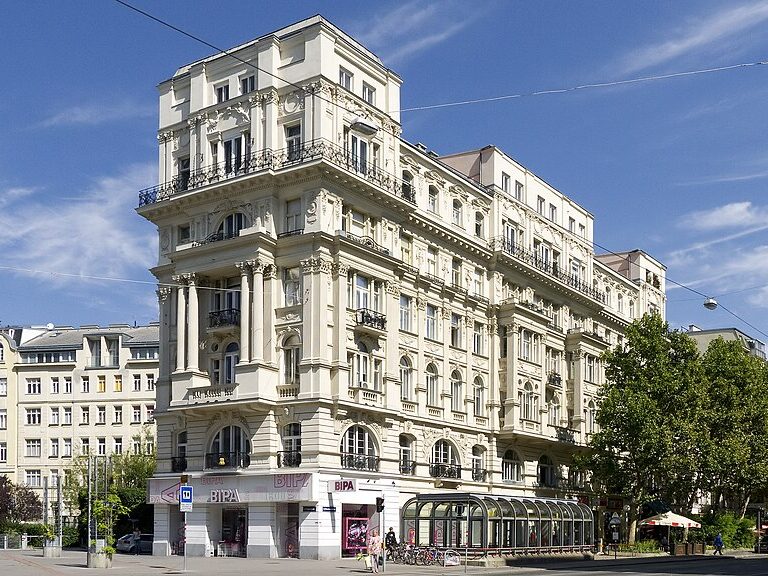
4. Leopoldstadt
Leopoldstadt is a more residential neighborhood located across the Danube River from central Vienna. This area contains many apartment buildings, in addition to retailers and restaurants. The image above shows the Nestroyplatz, one of Leopoldstadt’s most popular public squares.
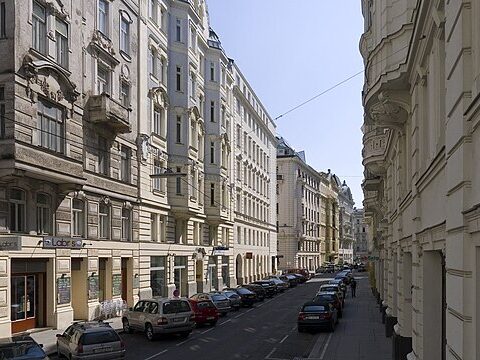
5. Mariahilf & Neubau
Mariahilf & Neubau are two neighborhoods that radiate out from Vienna’s historic center. Both are more residential and contain lots of multi-story apartment buildings. The area’s biggest attraction is the Museum Quarter which contains the Leopold and Mumok Museums.
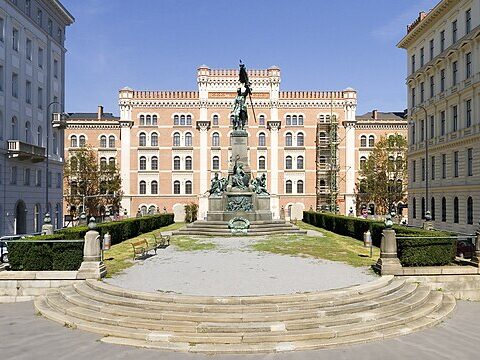
6. Josefstadt & Alsergrund
The neighborhoods of Josefstadt & Alsergrund are located north of the Innere Stadt. They contain a blend of large public buildings and private residences. The area’s most notable buildings include the Votivkirche and the Deutschmeister-Denkmal, which is shown in the image above.
Architecture of Vienna: In Review
Vienna is one of Europe’s most livable cities and one of the continent’s greatest places for Architectural History. Vienna contains buildings from every major architectural age, and all of these structures blend to create a truly unique city. The Ringstrasse on its own is an incredible site to see, and it pairs well with Vienna’s other notable sites such as St. Stephen’s Cathedral and Schönbrunn Palace. Anyone who visits Vienna is sure to be amazed by its grand boulevards, pristine buildings, and elegant and artistic culture.
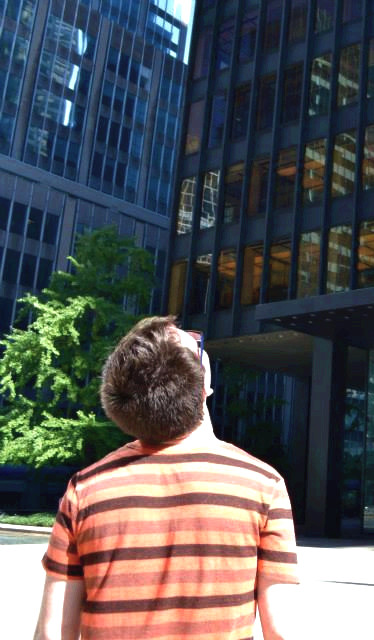
- About the Author
- Rob Carney, the founder and lead writer for Architecture of Cities has been studying the history of architecture for over 15 years.
- He is an avid traveler and photographer, and he is passionate about buildings and building history.
- Rob has a B.S. and a Master’s degree in Architecture and has worked as an architect and engineer in the Boston area for 10 years.
Like Architecture of Cities? Sign up for our mailing list to get updates on our latest articles and other information related to Architectural History.
